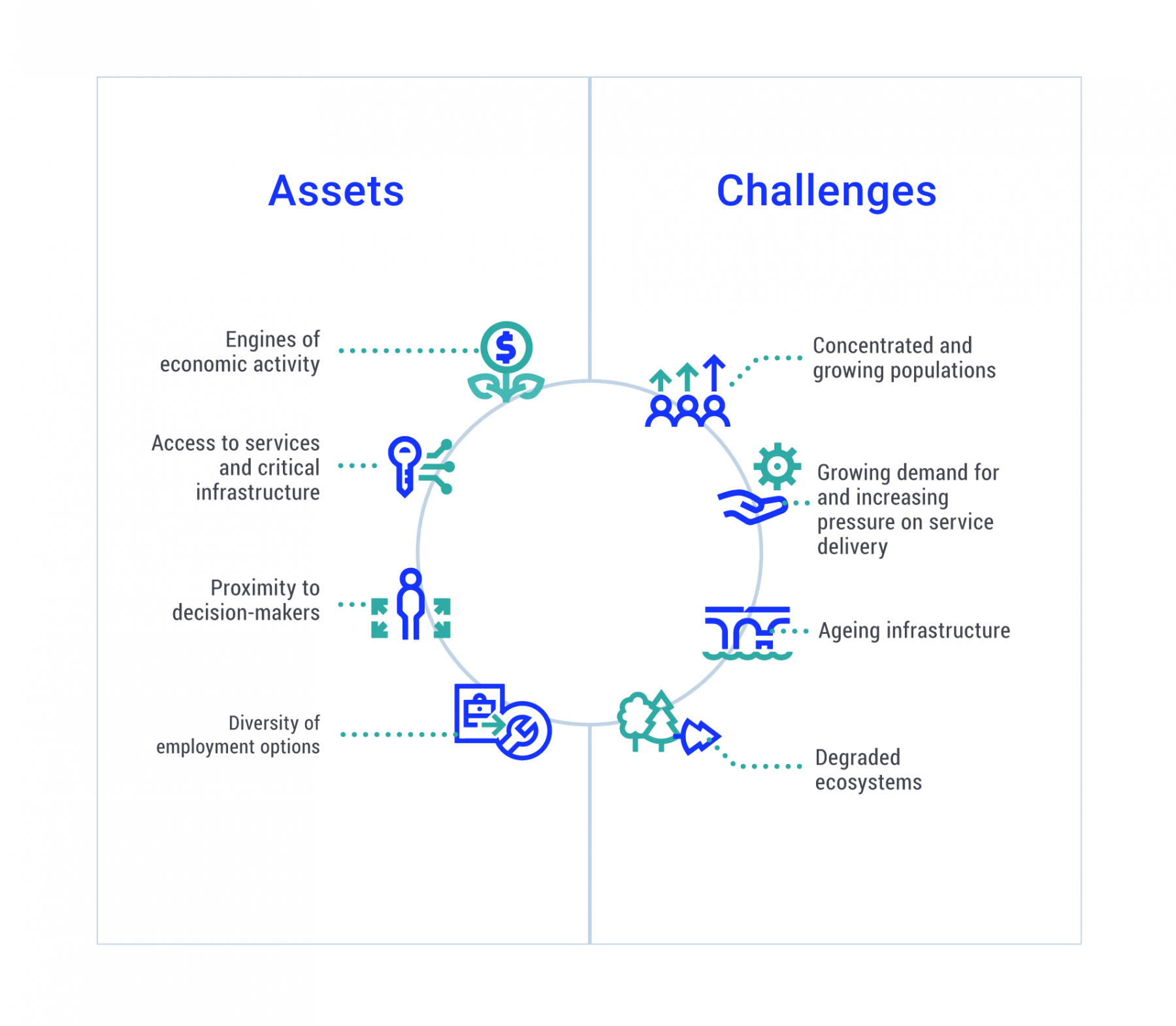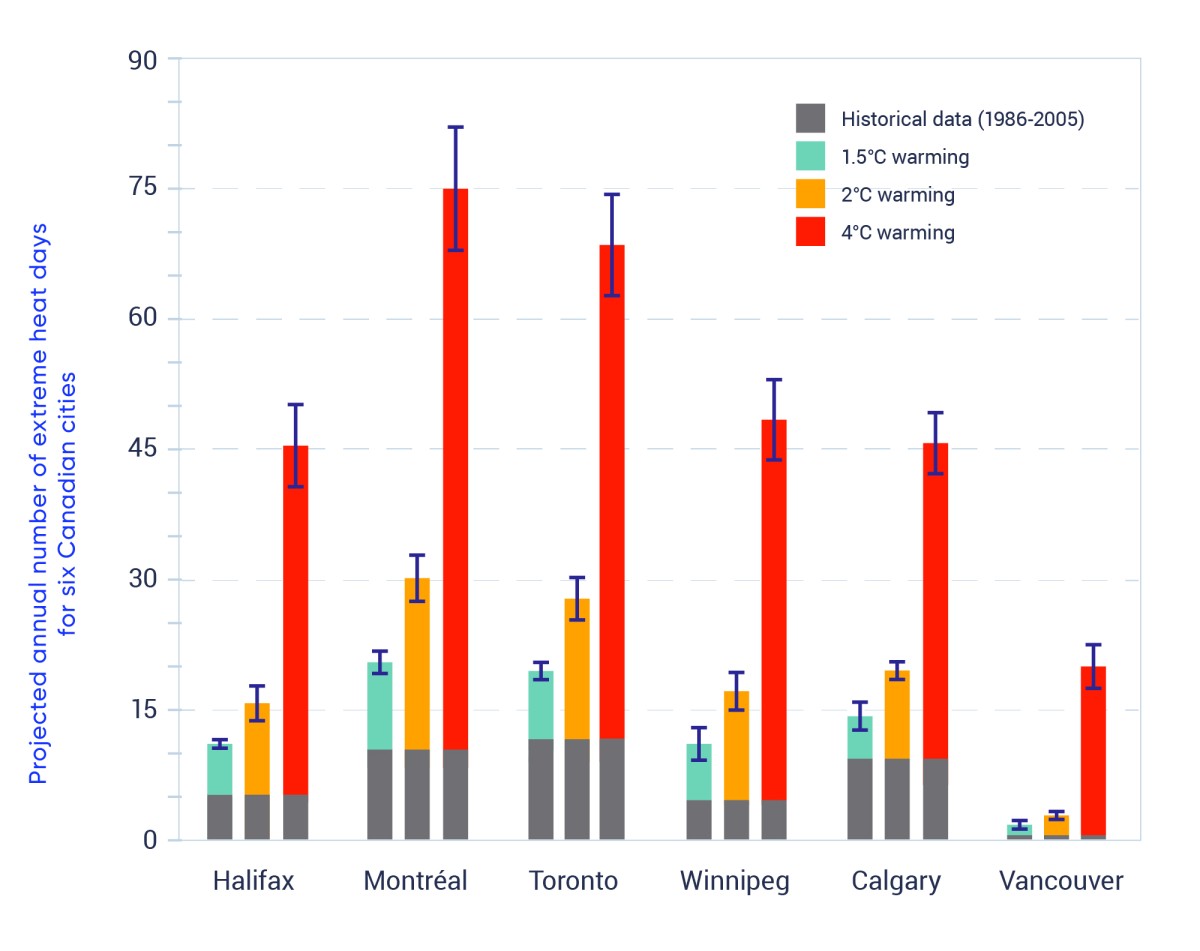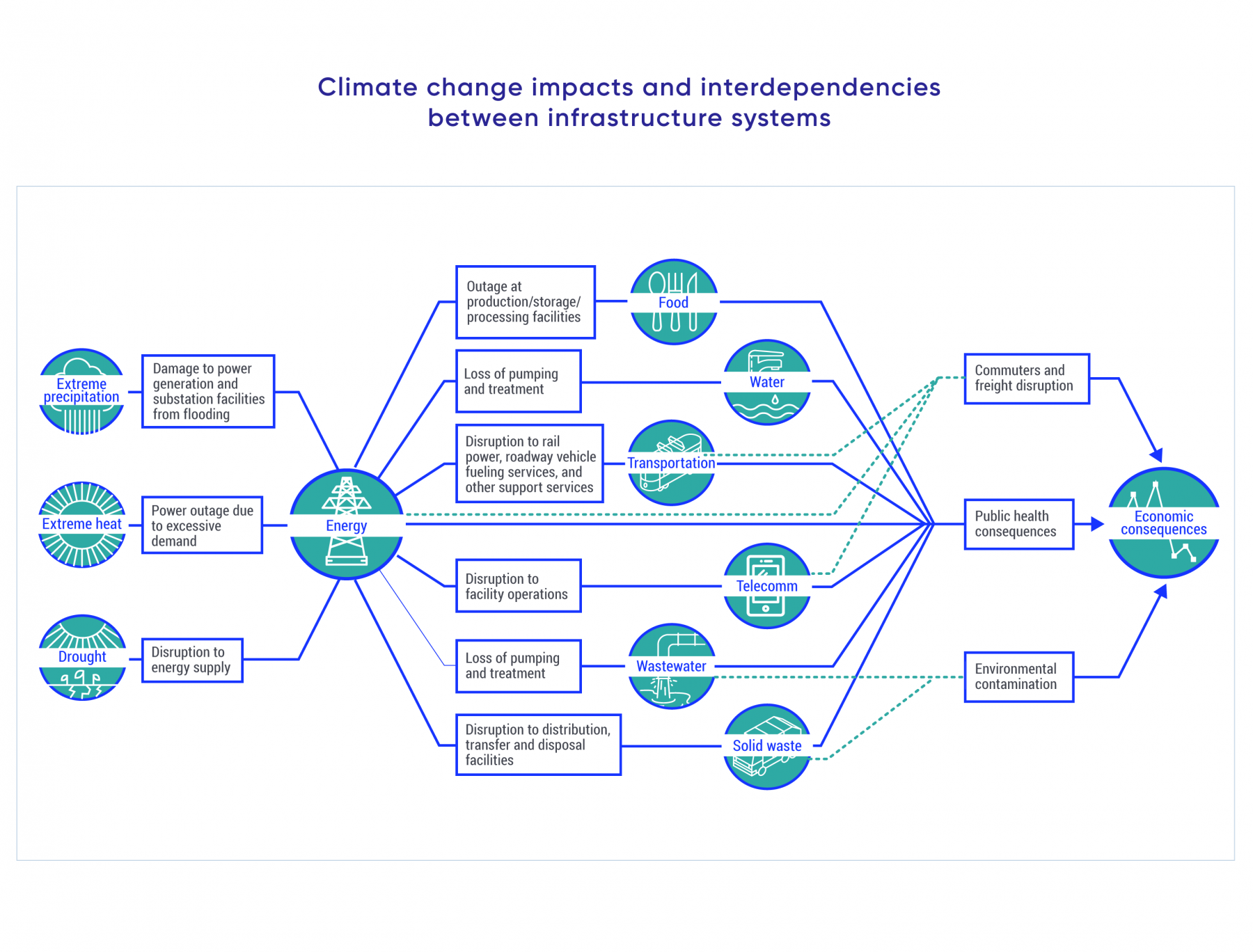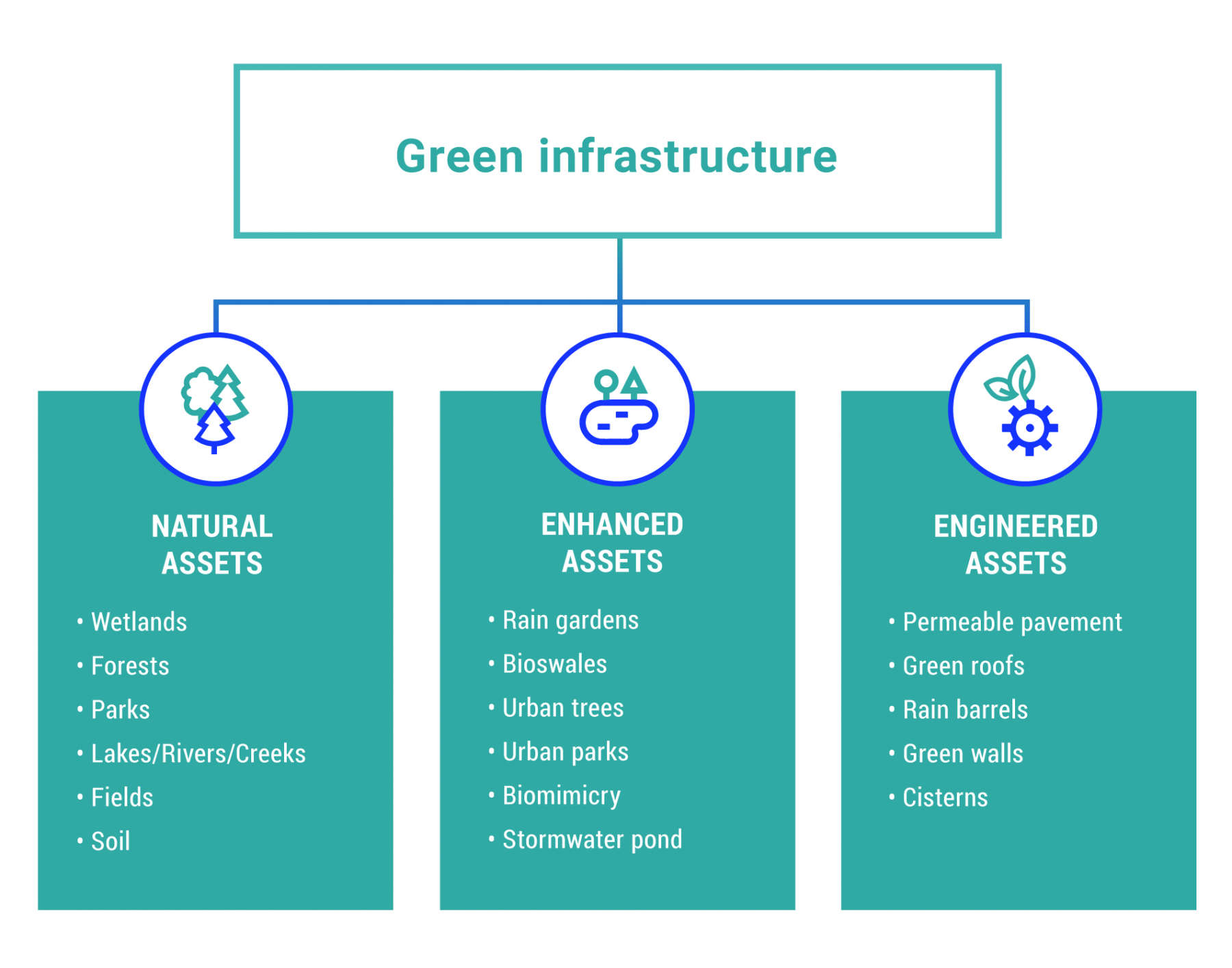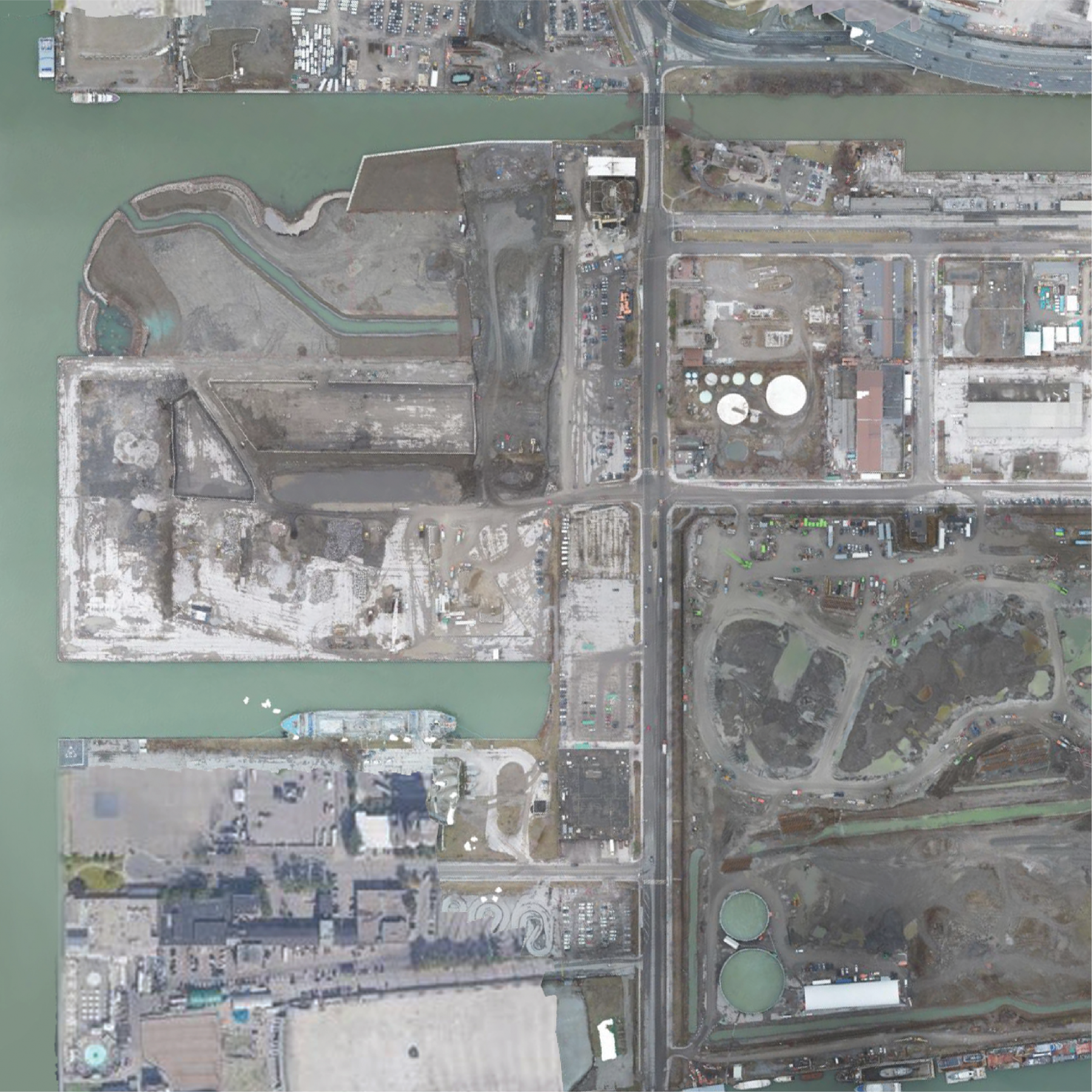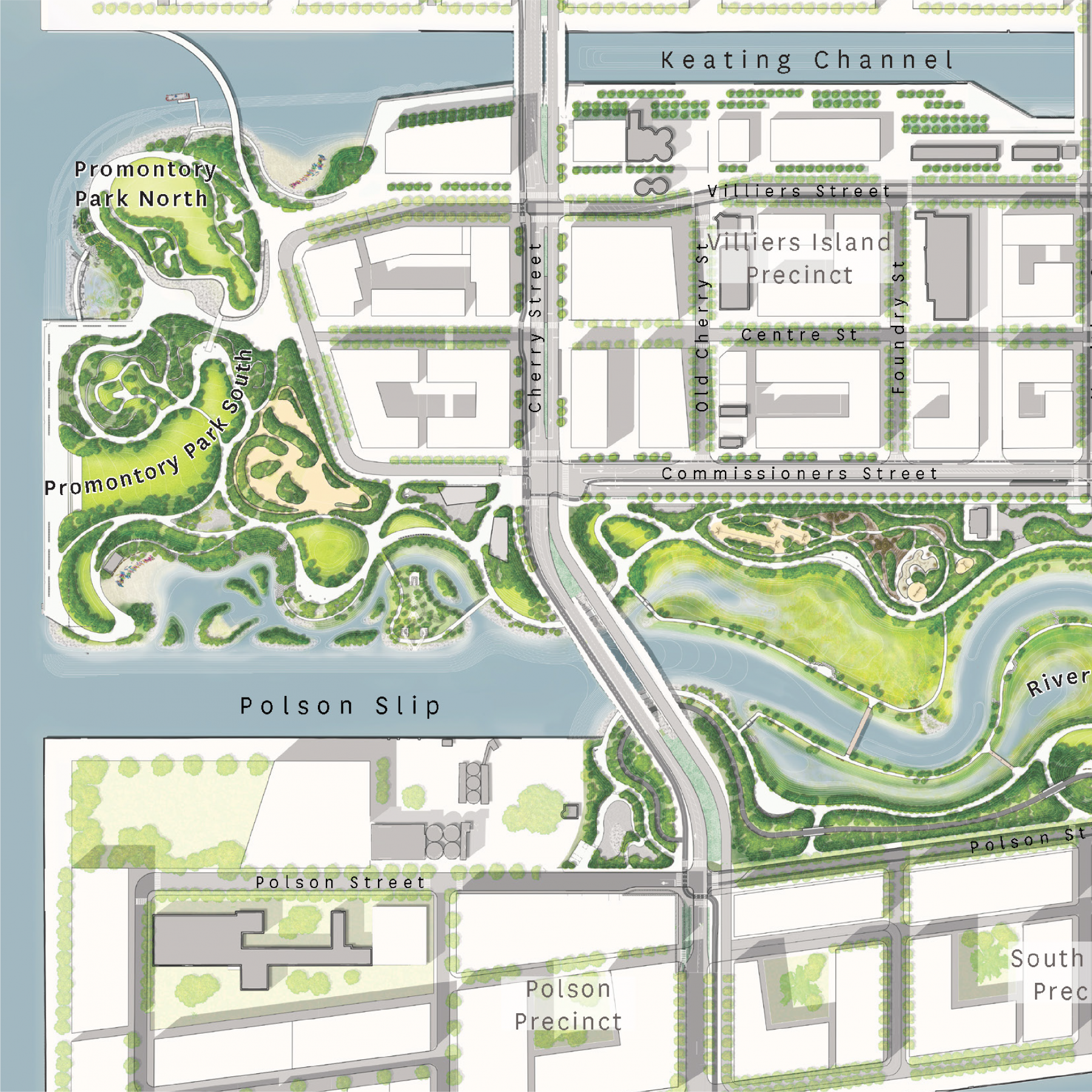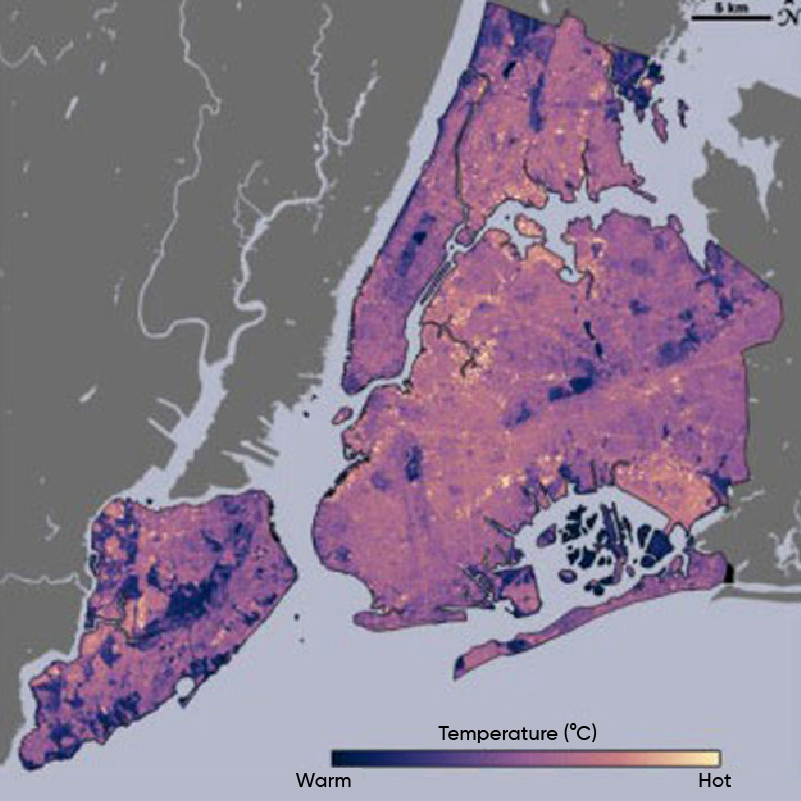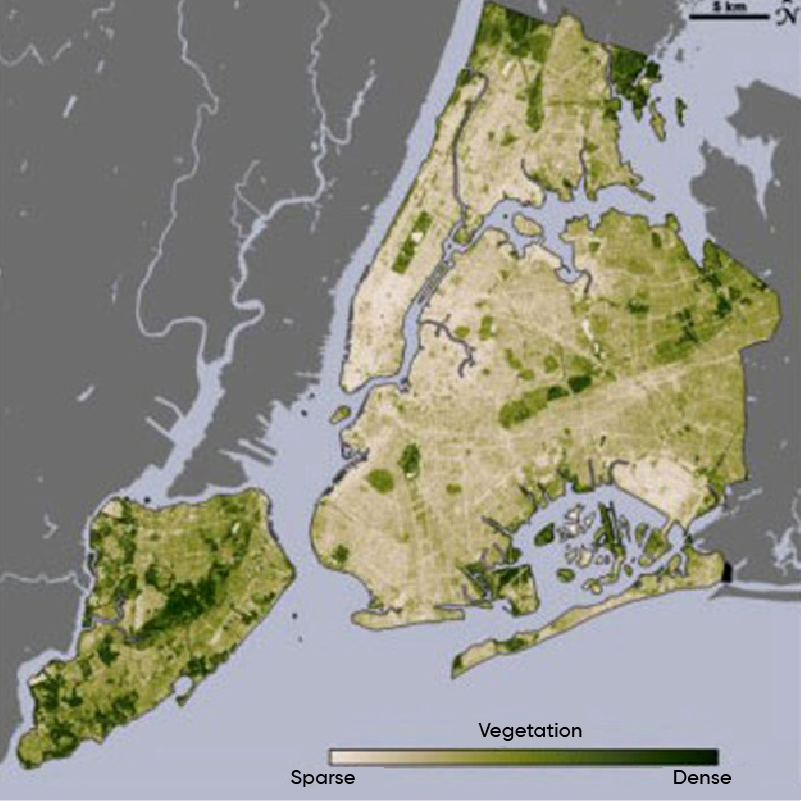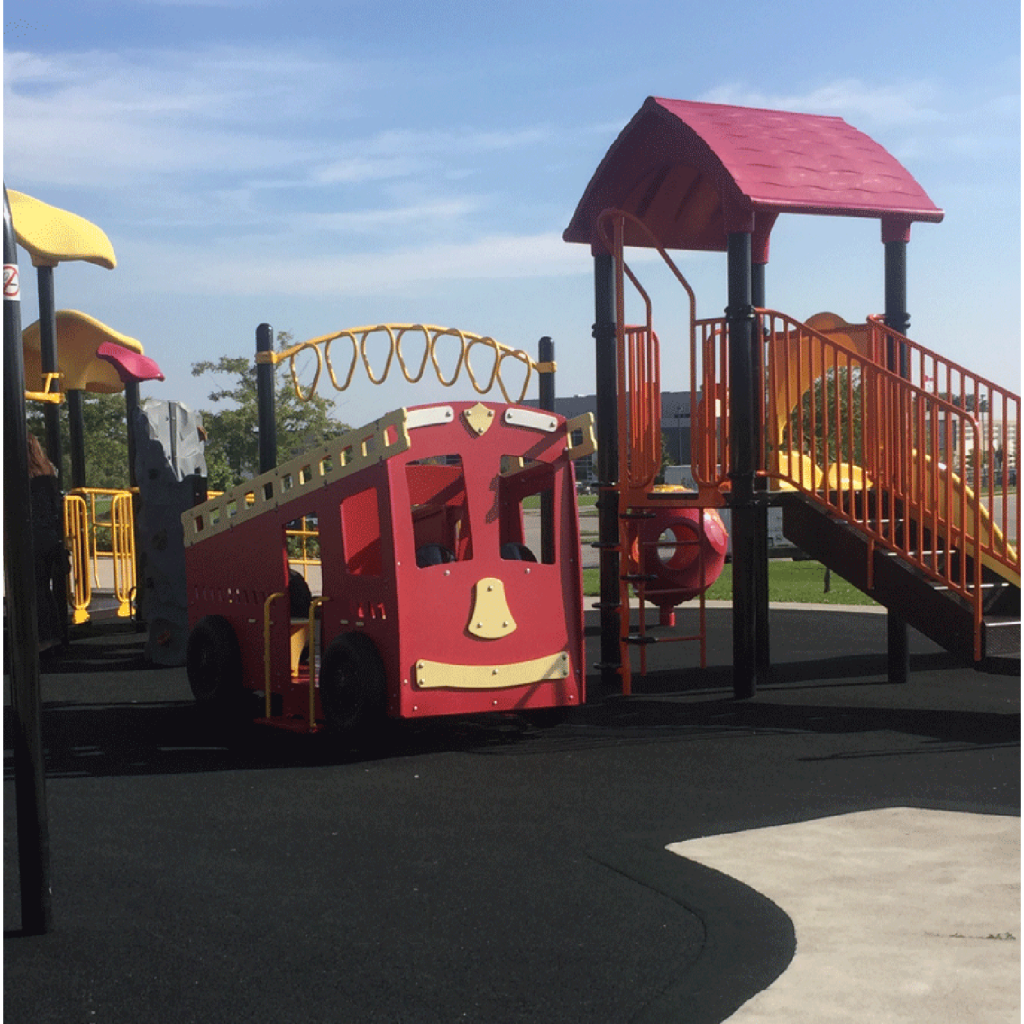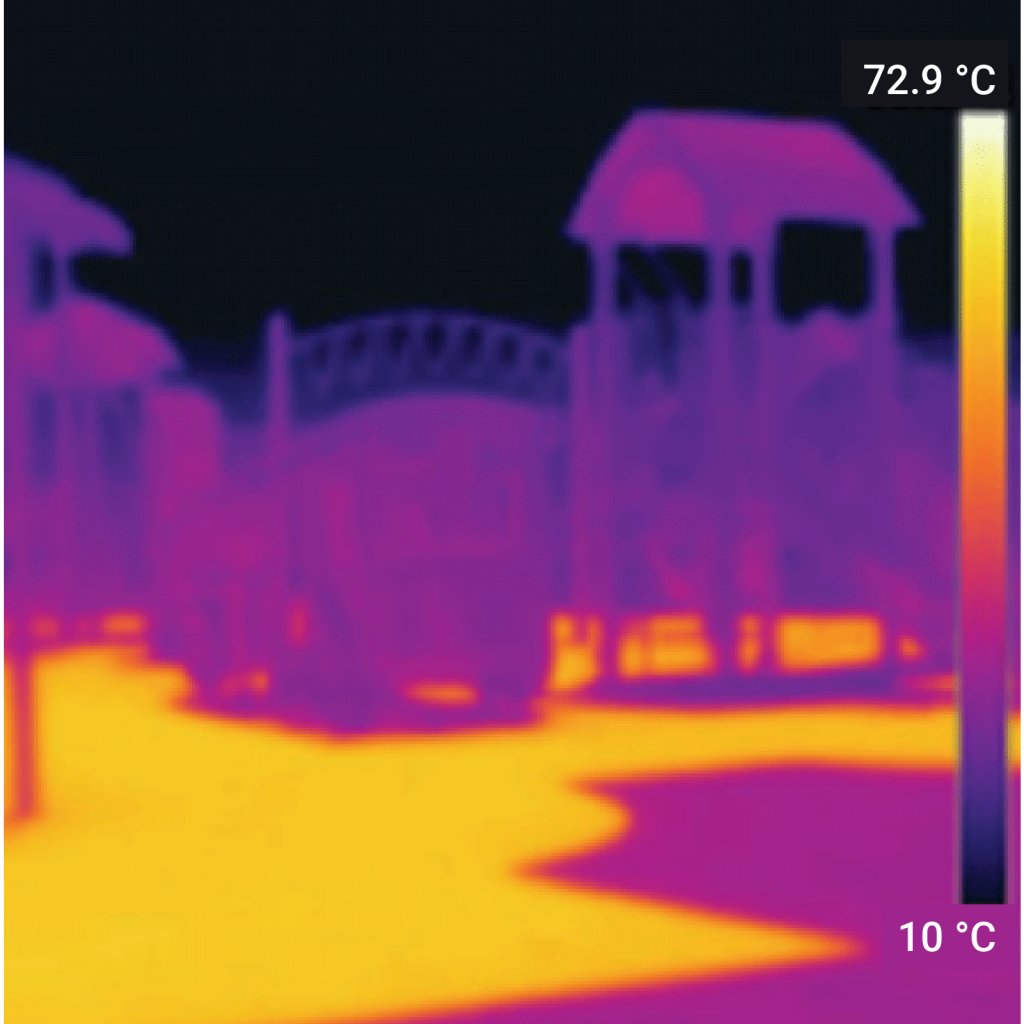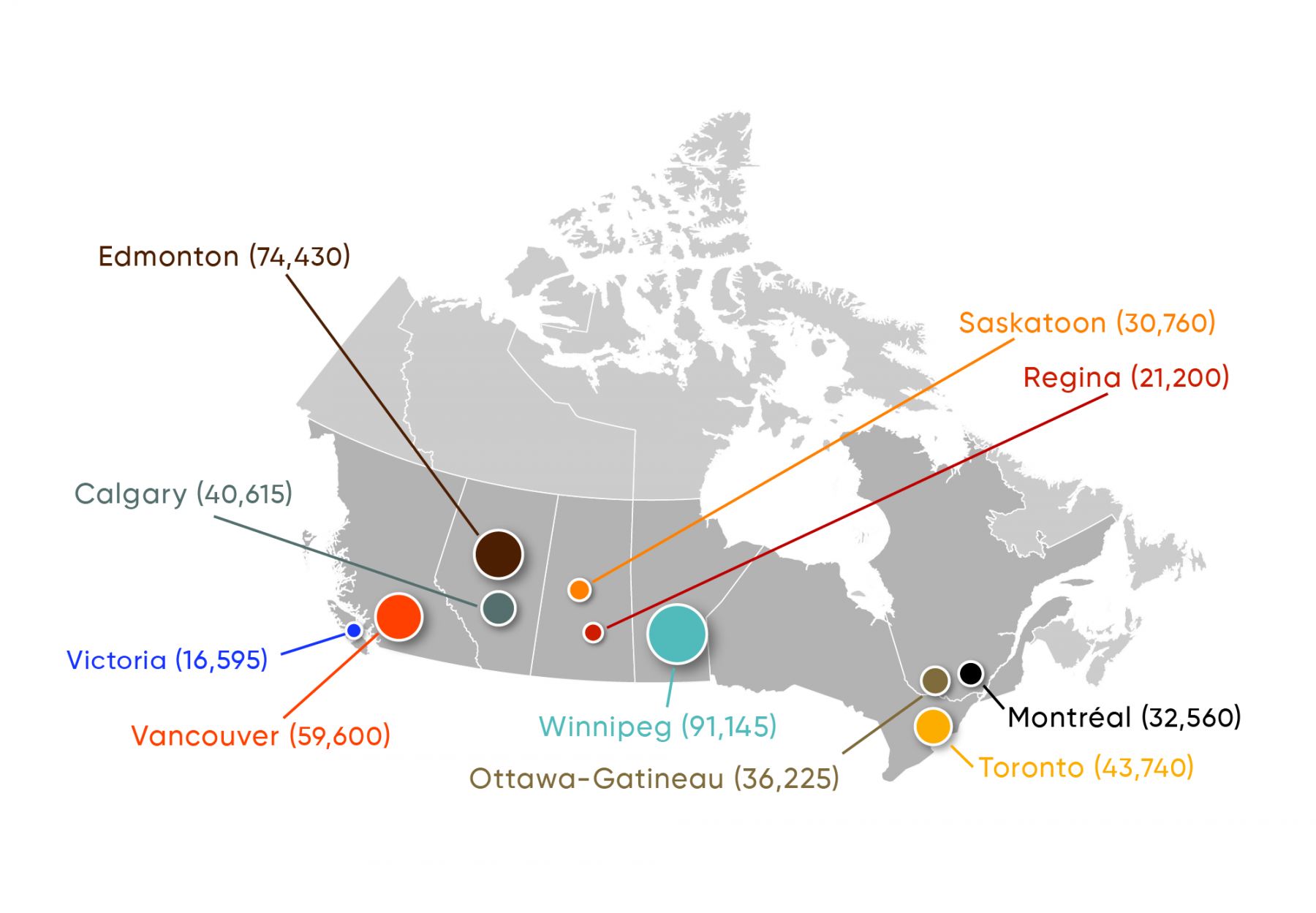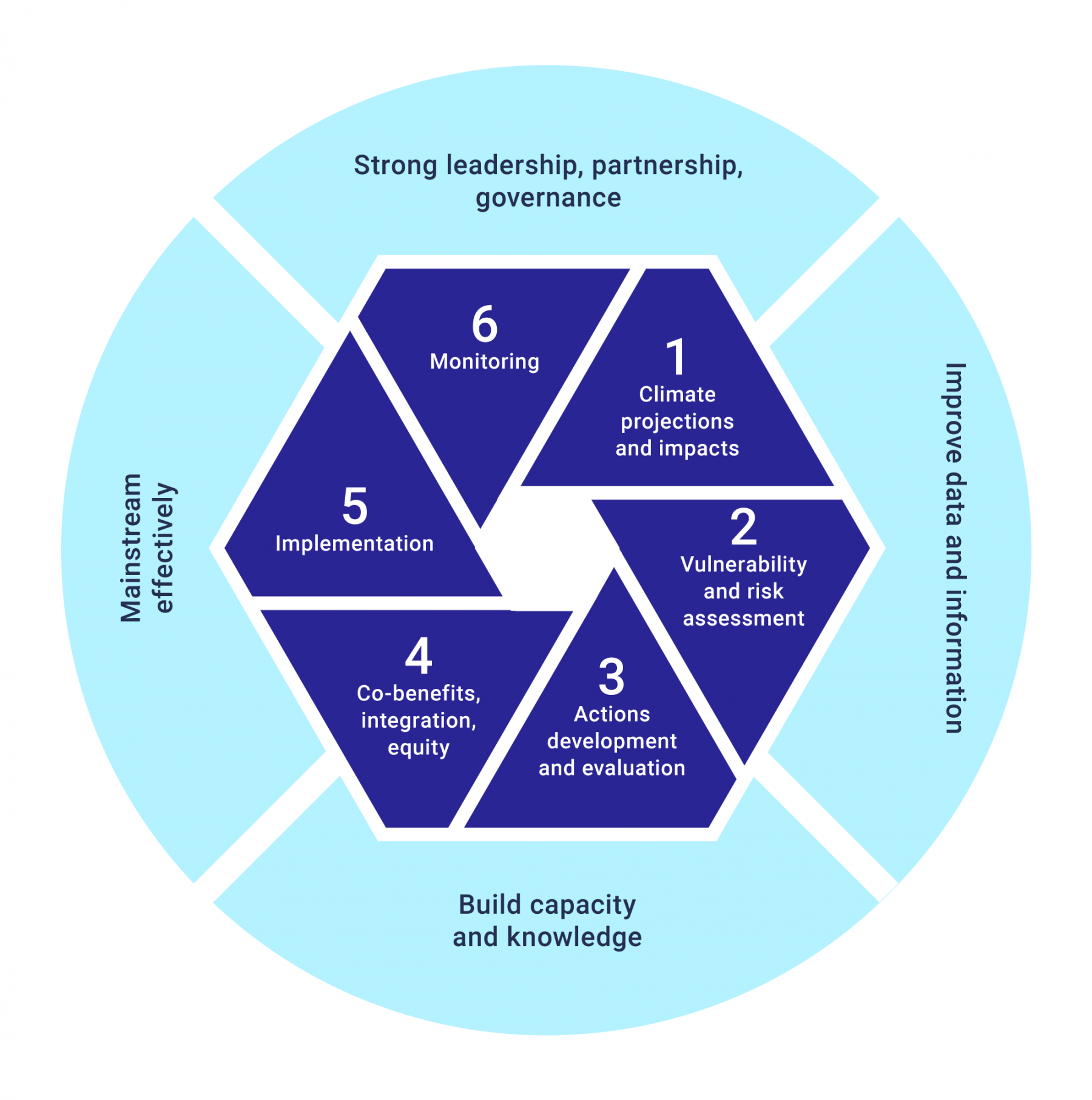Abbott, G. and Chapman, M. (2018). Addressing the new normal: 21st century disaster management in British Columbia. Retrieved February 2020, from https://www2.gov.bc.ca/assets/gov/public-safety-and-emergency-services/emergency-preparedness-response-recovery/embc/bc-flood-and-wildfire-review-addressing-the-new-normal-21st-century-disaster-management-in-bc-web.pdf
Adaptation to Climate Change Team (2015). Paying for urban infrastructure adaptation in Canada: An analysis of existing and potential economic instruments for local governments. Retrieved February 2020, from http://act-adapt.org/wp-content/uploads/2015/06/Urban-Infrastructure-Optimized3.pdf
Adaptation to Climate Change Team (2017). Low carbon resilience and transboundary municipal ecosystem governance: A case study of Still Creek. Retrieved February 2020, from http://act-adapt.org/wp-content/uploads/2017/06/ACT_stillcreek.pdf
Adaptation to Climate Change Team (2019). Workshop 2 summary report. Retrieved February 2020, from http://act-adapt.org/wp-content/uploads/2019/11/ICABCCI-Workshop-2-Summary.pdf
Adger, W. N., Barnett, J., Brown, K., Marshall, N., and O’Brien, K. (2013). Cultural dimensions of climate change impacts and adaptation. Nature Climate Change, 3(2), 112-117. Retrieved February 2020, from https://doi.org/10.1038/NCLIMATE1666
Adger, W. N., Barnett, J., Chapin, F. S., and Ellemor, H. (2011). This must be the place: Underrepresentation of identity and meaning in climate change decision-making. Global Environmental Politics, 11(2), 1-25. Retrieved February 2020, from https://doi.org/10.1162/GLEP_a_00051
AECOM and Risk Sciences International. (2015). Toronto Hydro-Electric System Limited climate change vulnerability assessment. Retrieved February 2020, from https://pievc.ca/sites/default/files/th_pievc_cc_assessment_final_external_june_1_2015_-_sep_14_revision_web.pdfRetrieved February 2020, from https://pievc.ca/sites/default/files/th_pievc_cc_assessment_final_external_june_1_2015_-_sep_14_revision_web.pdf
Agyapong, V. I. O., Hrabok, M., Juhas, M., Omeje, J., Denga, E., Nwaka, B., Akinjise, I., Corbett, S. E., Moosavi, S., Brown, M., Chue, P., Greenshow, A. J., and Li, X. M. (2018). Prevalence rates and predictors of generalized anxiety disorder symptoms in residents of Fort McMurray six months after a wildfire. Frontiers in Psychiatry, 9(July), 1-12. Retrieved February 2020, from https://doi.org/10.3389/fpsyt.2018.00345
Ahern, J., Cilliers, S., and Niemelä, J. (2014). The concept of ecosystem services in adaptive urban planning and design: A framework for supporting innovation. Landscape and Urban Planning, 125, 254-259. Retrieved February 2020, from https://doi.org/10.1016/j.landurbplan.2014.01.020
Ahiablame, L. M., Engel, B. A., and Chaubey, I. (2013). Effectiveness of low impact development practices in two urbanized watersheds: Retrofitting with rain barrel/cistern and porous pavement. Journal of Environmental Management, 119, 151-161. Retrieved February 2020, from https://doi.org/10.1016/j.jenvman.2013.01.019
Alexander, C. and McDonald, C. (2014). Urban forests: the value of trees in the city of Toronto. Retrieved February 2020, from https://www.td.com/document/PDF/economics/special/UrbanForests.pdf
Amec Foster Wheeler and Credit Valley Conservation. (2017). National infrastructure and buildings climate change adaptation state of play report. Retrieved February 2020, from www.ibwgsop.org/assets/IBWG_SoP_Final.pdf
Amundsen, H. (2015). Place attachment as a driver of adaptation in coastal communities in Northern Norway. Local Environment, 20(3), 257-276. Retreieved February 2020, from https://doi.org/10.1080/13549839.2013.838751
Araos, M., Ford, J. D., and Austin, S. (2017). Canada’s cities confront climate change. GreenBiz. Retrieved February 2020, from https://www.greenbiz.com/article/canadas-cities-confront-climate-change
Archer, D., Almansi, F., DiGregorio, M., Roberts, D., Sharma, D., and Syam, D. (2014). Moving towards inclusive urban adaptation: Approaches to integrating community-based adaptation to climate change at city and national scale. Climate and Development, 6(4), 345-356. Retrieved February 2020, from https://doi.org/10.1080/17565529.2014.918868
Arsenijevich, N. (2018): What if … cities become sites of food production. Aperture Newsletter, WSP Canada. Retrieved February 2020, from http://ca-futureready.wsp.com/aperture-2018-q2/aperture-2018-q2/
ARUP (2014). Cities alive: Rethinking green infrastructure. Retrieved February 2020, from https://www.arup.com/-/media/arup/files/publications/c/cities_alive_booklet.pdf
ARUP and Partners (2016). Inside the CRI: Reference guide. Retrieved February 2020, from https://www.alnap.org/system/files/content/resource/files/main/160516-inside-the-cri-reference-guide.pdf
Asset Management BC (2018). Climate change and asset management: A sustainable service delivery primer. Retrieved February 2020, from https://www.assetmanagementbc.ca/wp-content/uploads/The-BC-Framework_Primer-on-Climate-Change-and-Asset-Management.pdf
Associated Engineering (2011). City of Calgary water supply infrastrcuture: Climate change vulnerability risk assessment. Retrieved February 2020, from https://pievc.ca/sites/default/files/city_of_calgary_water_supply_infrastructure_report_web.pdf
Auditor General of Canada (2018). Perspectives on climate change action in Canada. Office of the Auditor General of Canada, Ottawa. Retrieved February 2020, from https://www.oag-bvg.gc.ca/internet/English/parl_otp_201803_e_42883.html
Aylett, A. (2015). Institutionalizing the urban governance of climate change adaptation: Results of an international survey. Urban Climate, 14(December), 4-16. Retrieved February 2020, from https://doi.org/10.1016/j.uclim.2015.06.005
Bahadur, A., Tanner, T., King, D., Kirbyshire, A., and Morsi, H. (2016). Resilience scan, October-December 2015: A review of literature, debates and social media activity on resilience. Overseas Development Institute, London. Retrieved February 2020, from https://www.odi.org/sites/odi.org.uk/files/resource-documents/11261.pdf
Ballard, M. and Thompson, S. (2013). Flooding, hope and livelihoods: Lake St . Martin First Nation. Canadian Journal of Nonprofit and Social Economy Research, 4(1), 43-65. Retrieved February 2020, from https://doi.org/10.22230/cjnser.2013v4n1a129
Bauer, A. and Steurer, R. (2014). Multi-level governance of climate change adaptation through regional partnerships in Canada and England. Geoforum, 51, 121-129. Retrieved February 2020, from https://doi.org/10.1016/j.geoforum.2013.10.006
BC Auditor General (2018). Managing climate change risks: An independent audit. Office of the Auditor General of British Columbia, Victoria, British Columbia. Retrieved February 2020, from https://www.bcauditor.com/sites/default/files/publications/reports/Climate_Change_FINAL.pdf
BC Housing (2019). Mobilizing building adaptation and resilience. Retrieved February 2020, from https://www.bchousing.org/research-centre/library/residential-design-construction/MBAR&sortType=sortByDate
BC Hydro (2019). Weathering the storm: Many British Columbians not prepared for increasingly severe winter storms. Retrieved February 2020, from https://www.bchydro.com/content/dam/BCHydro/customer-portal/documents/news-and-features/report-storm-preparedness-report-nov2019..pdf
BC Ministry of Environment and Climate Change Strategy (2017). Addressing climate and health risks in BC: Public health. Retrieved February 2020, from https://www2.gov.bc.ca/assets/gov/environment/climate-change/adaptation/health/final_climate_and_health_backgrounder_public_health.pdf
BC Ministry of Environment and Climate Change Strategy (2019). Preliminary strategic climate risk assessment for British Columbia. Retrieved February 2020, from https://www2.gov.bc.ca/assets/gov/environment/climate-change/adaptation/prelim-strat-climate-risk-assessment.pdf
Beatley, T. and Newman, P. (2013). Biophilic cities are sustainable, resilient cities. Sustainability, 5(8), 3328-3345. Retrieved February 2020, from https://doi.org/10.3390/su5083328
Benmarhnia, T., Bailey, Z., Kaiser, D., Auger, N., King, N., and Kaufman, J. S. (2016). A difference-in-differences approach to assess the effect of a heat action plan on heat-related mortality, and differences in effectiveness according to sex, age, and socioeconomic status (Montréal, Quebec). Environmental Health Perspectives, 124(11), 1694-1699. Retrieved February 2020, from https://doi.org/10.1289/EHP203
Berry, J. (2016). Ecosystem-based adaptation to climate change in urban areas: An evaluation of rainwater management practices in Metro Vancouver. Masters Thesis, Simon Fraser University. Retrieved February 2020, from summit.sfu.ca/system/files/iritems1/16260/etd9436_JBerry.pdf
Berry, P., Clarke, K., Fleury, M. D., and Parker, S. (2014). Human health, Chapter 7 in Canada in a Changing Climate: Sector Perspectives on Impacts and Adaptation, (Eds.) F.J. Warren and D.S. Lemmen. Government of Canada, Ottawa, Ontario, 191-232. Retrieved February 2020, from https://www.nrcan.gc.ca/sites/www.nrcan.gc.ca/files/earthsciences/pdf/assess/2014/pdf/Chapter7-Human-Health_Eng.pdfhttps://changingclimate.ca/CCCR2019/chapter/7-0/
Biesbroek, R., Dupuis, J., Jordan, A., Wellstead, A., Howlett, M., Cairney, P., Rayner, J., and Davidson, D. (2015). Opening up the black box of adaptation decision-making. Nature Climate Change, 5(6), 493-494. Retrieved February 2020, from https://doi.org/10.1038/nclimate2615
Birkholz, S., Muro, M., Jeffrey, P., and Smith, H. M. (2014). Rethinking the relationship between flood risk perception and flood management. Science of the Total Environment, 478, 12-20. Retrieved February 2020, from https://doi.org/10.1016/j.scitotenv.2014.01.061
Blais, E. L., Greshuk, J., and Stadnyk, T. (2016). The 2011 flood event in the Assiniboine River Basin: Causes, assessment and damages. Canadian Water Resources Journal, 41(1-2), 74-84. Retrieved February 2020, from https://doi.org/10.1080/07011784.2015.1046139
Bleau, N., Bisaillon, A., and Duval, V. (2018). Inventaire et suivi de l’utilisation des ressources en adaptation des milieux urbains aux changements climatiques. Retrieved February 2020, from https://www.ouranos.ca/publication-scientifique/RapportBisaillon2018.pdf
Boggess, J. M., Becker, G. W., and Mitchell, M. K. (2014). Storm and flood hardening of electrical substations. 2014 IEEE PES TandD Conference and Exposition, 1-5. Retrieved February 2020, from https://doi.org/10.1109/TDC.2014.6863387
BOMA Canada (2019). 2019 resilience brief. Retrieved February 2020, from http://bomacanada.ca/wp-content/uploads/2019/11/BOMA_Resilience_Brief_Eng_v5.pdf
BOMA Canada (2020). About BOMA BEST. Retrieved February 2020, from http://bomacanada.ca/bomabest/aboutbomabest/
Bours, D., McGinn, C., and Pringle, P. (2014). Guidance note 1: Twelve reasons why climate change adaptation M and E is challenging. Retrieved February 2020, from www.ukcip.org.uk/wp-content/PDFs/MandE-Guidance-Note1.pdf
Brandt, L. A., Derby Lewis, A., Fahey, R., Scott, L., Darling, L., and Swanston, C. (2016). A framework for adapting urban forests to climate change. Environmental Science & Policy, 66, 393-402. Retrieved February 2020, from https://doi.org/10.1016/j.envsci.2016.06.005
Brandt, L. A., Derby Lewis, A., Scott, L., Darling, L., Fahey, R. T., Iverson, L., Nowak, D. J., Bodine, A. R., Bell, A., Still, S., Butler, P. R., Dierich, A., Handler, S. D., Janowiak, M. K., Matthews, S. N., Miesbauer, J. W., Peters, M., Prasad, A., Shannon, P. D., Stotz, D., and Swanston, C. W. (2017). Chicago wilderness region urban forest vulnerability assessment and synthesis: A report from the Urban Forestry Climate Change Response Framework Chicago Wilderness Project. Retrieved February 2020, from https://www.fs.fed.us/nrs/pubs/gtr/gtr_nrs168.pdf
Bras d’Or Lakes Collaborative Environmental Planning Initiative (2018). Bras d’Or Charter. Retrieved February 2020, from https://brasdorcepi.ca/cepi-homepage/bras-dor-charter/
Bristow, D. N. and Bristow, M. (2017). Retrofitting for resiliency and sustainability of households. Canadian Journal of Civil Engineering, 44(7), 530-538. Retrieved February 2020, from https://doi.org/10.1139/cjce-2016-0440
Brooke, R., O’Neill, S. J., and Cairns, S. (2017). Defining and Scoping Municipal Natural Assets. Retrieved February 2020, from https://mnai.ca/media/2018/02/finaldesignedsept18mnai.pdf
Brown, C., Shaker, R. R., and Das, R. (2018). A review of approaches for monitoring and evaluation of urban climate resilience initiatives. Environment, Development and Sustainability, 20(1), 23-40. Retrieved February 2020, from https://doi.org/10.1007/s10668-016-9891-7
Brown, G. and Raymond, C. M. (2014). Methods for identifying land use conflict potential using participatory mapping. Landscape and Urban Planning, 122, 196-208. Retrieved February 2020, from https://doi.org/10.1016/j.landurbplan.2013.11.007
Burch, S. (2010). Transforming barriers into enablers of action on climate change: Insights from three municipal case studies in British Columbia, Canada. Global Environmental Change, 20(2), 287-297. Retrieved February 2020, from https://doi.org/10.1016/j.gloenvcha.2009.11.009
Burch, S., Sheppard, S. R. J., Shaw, A., and Flanders, D. (2010). Planning for climate change in a flood-prone community: Municipal barriers to policy action and the use of visualizations as decision-support tools. Journal of Flood Risk Management, 3(2), 126-139. Retrieved February 2020, from https://doi.org/10.1111/j.1753-318X.2010.01062.x
Bureau de normalisation du Québec (2013). BNQ 3019-190/2013: Reducing the urban heat island effect – Parking lot development – Design guide. Retrieved February 2020, from https://www-secur.criq.qc.ca/bnq/documents/enquetes_publiques/3019-190_dpen.pdf
Buse, C. G. (2018). Why should public health agencies across Canada conduct climate change and health vulnerability assessments? Canadian Journal of Public Health, 109(5-6), 782-785. Retrieved February 2020, from https://doi.org/10.17269/s41997-018-0118-6
Bush, E. and Lemmen, D. S. (2019). Canada’s changing climate report. Retrieved February 2020, from https://www.nrcan.gc.ca/sites/www.nrcan.gc.ca/files/energy/Climate-change/pdf/CCCR_FULLREPORT-EN-FINAL.pdf
C40 Cities (2016). Climate risk and adaptation framework and Taxonomy (CRAFT). Retrieved February 2020, from http://c40-production-images.s3.amazonaws.com/other_uploads/images/445_C40_CRAFT_v11.original.pdf?1453129528
C40 Cities and AECOM. (2017). C40 infrastructure interdependencies and climate risks report. Retrieved February 2020, from https://unfccc.int/sites/default/files/report_c40_interdependencies_.pdf
Cairns, S., O’Neill, S. J., and Wilson, S. (2019). Opportunities to fund municipal natural asset management projects: An overview of six federal infrastructure funding programs. Retrieved February 2020, from https://institute.smartprosperity.ca/sites/default/files/spmnaireportfullweb.pdf
Campbell, J., Saxe, D., and Zechner, F. (2007). Municipal liability for sewer and water pipe failures…despite statutory authority and immunity. Retrieved February 2020, from https://www.siskinds.com/cmsfiles/PDF/oswca-paper-to-cwwa-27-feb-2007-final.pdf
Canadian Council of Forest Ministers (2013). Evaluating past, current and future forest fire load trends in Canada. Retrieved February 2020, from https://www.ccfm.org/pdf/2 Fire Load Trends.pdf
Canadian Electricity Association (2019). The Canadian Electricity Association announces climate change adaptation plans in collaboration with Natural Resources Canada. Retrieved February 2020, from https://electricity.ca/news-events/news/the-canadian-electricity-association-announces-climate-change-adaptation-plans-in-collaboration-with-natural-resources-canada/
Canadian Institute of Planners (2018). Policy on climate change planning. Retrieved February 2020, from http://cip-icu.ca/Files/Policy-2018/policy-climate-eng-FINAL.aspx
Canadian Institute of Planners (2019). Perspective on climate change: A report oin the 2019 benchmarking survey of Canadian professional planners. Retrieved February 2020, from https://www.cip-icu.ca/getattachment/Resources/Resources/2019-CIP-Climate-Change-Survey-Final-Report/CIP-FINAL-report.pdf.aspx
Canadian Society of Landscape Architects (n.d.). Landscape architects lead climate conscious design and planning. Retrieved February 2020, from https://www.csla-aapc.ca/sites/csla-aapc.ca/files/Advocacy/CSLA Position Paper Climate Change FINAL en.pdf
Canadian Society of Landscape Architects (2018). Adaptation primers. Retrieved February 2020, from https://www.csla-aapc.ca/primers
Canadian Standards Association (2018). Guideline on basement flood protection and risk reduction. Canadian Standards Association, Toronto, Ontario. Retrieved February 2020, from https://store.csagroup.org/ccrz__ProductDetails?viewState=DetailView&cartID=&portalUser=&store=&cclcl=en_US&sku=Z800-18&format=PDF
Carmin, J., Nadkarni, N., and Rhie, C. (2012). Progress and challenges in urban climate adaptation planning: Results of a global survey. Retrieved February 2020, from https://www.cakex.org/sites/default/files/documents/Urban_Adaptation_Report_23May2012.pdf
Carter, J. G., Cavan, G., Connelly, A., Guy, S., and Handley, J. (2015). Climate change and the city: Building capacity for urban adaptation. Progress in Planning, 95, 1-66. Retrieved February 2020, from https://doi.org/10.1016/j.progress.2013.08.001
CBC News (2016). Lake St. Martin evacuee blames Winnipeg for suicides, addictions, depression. Retrieved February 2020, from https://www.cbc.ca/news/canada/manitoba/lake-st-martin-first-nation-lillian-catcheway-winnipeg-1.3589066
Cedeño Laurent, J. G., Williams, A., Oulhote, Y., Zanobetti, A., Allen, J. G., and Spengler, J. D. (2018). Reduced cognitive function during a heat wave among residents of non-air-conditioned buildings: An observational study of young adults in the summer of 2016. PLoS Medicine, 15(7), 1-20. Retrieved February 2020, from https://doi.org/10.1371/journal.pmed.1002605
Centre for Civic Governance (2018). Build a Better Waterfront with Nature. Retrieved February 2020, from https://www.civicgovernance.ca/build-better-waterfront-nature/
Chambers, K. (2013). Weeping tile disconnection to reduce the impact of basement flooding. Retrieved February 2020, from http://docplayer.net/11204245-Weeping-tile-disconnection-to-reduce-the-impact-of-basement-flooding-london-ontario.html
Chang, S. E., Yip, J. Z. K., van Zijll de Jong, S. L., Chaster, R., and Lowcock, A. (2015). Using vulnerability indicators to develop resilience networks: a similarity approach. Natural Hazards, 78(3), 1827-1841. Retrieved February 2020, from https://doi.org/10.1007/s11069-015-1803-x
Chen, C., Doherty, M., Coffee, J., Wong, T., and Hellmann, J. (2016). Measuring the adaptation gap: A framework for evaluating climate hazards and opportunities in urban areas. Environmental Science and Policy, 66, 403-419. Retrieved February 2020, from https://doi.org/10.1016/j.envsci.2016.05.007
Cheng, J. J., and Berry, P. (2013). Health co-benefits and risks of public health adaptation strategies to climate change: A review of current literature. International Journal of Public Health, 58(2), 305-311. Retrieved February 2020, from https://doi.org/10.1007/s00038-012-0422-5
City of Barrie (2017). Storm Drainage and Stormwater Management Policies and Guidelines. Barrie, Ontario. Retrieved February 2020, from https://www.barrie.ca/City Hall/Planning-and-Development/Engineering-Resources/Documents/City-Standards/Storm-Drainage-and-Stormwater-Management-Policies-and-Design-Guidelines.pdf
City of Barrie (2018). Implementation plan: Climate change adaptation strategy. Retrieved February 2020, from https://www.barrie.ca/Living/Environment/Conservation/Documents/Implementation Plan – Climate Change Adaptation Strategy 2018.pdf
City of Calgary (2017). March 3, 2017 agenda-setting workshop findings. Calgary, Alberta. Retrieved February 2020, from http://www.calgary.ca/CS/Documents/ResilientCalgary/RC-Mar3-AgendaSettingWorkshopFindings.pdf
City of Cambridge (2011). City of Cambridge stormwater management policies and guidelines. Cambridge, Ontario. Retrieved February 2020, from https://www.cambridge.ca/en/learn-about/resources/Stormwater-Management-Policy.pdf
City of Kitchener (2019). Kitchener’s sustainable urban forest strategy 2019-2023. Retrieved February 2020, from https://www.kitchener.ca/en/resourcesGeneral/Documents/UrbanForestStrategyFinal.pdf
City of Montréal (2017). Climate change adaptation plan for the Montréal Urban Agglomeration: 2015-2020. Montréal, Quebec. Retrieved February 2020, from http://ville.montreal.qc.ca/pls/portal/docs/PAGE/ENVIRO_FR/MEDIA/DOCUMENTS/2017_PACCAM_2015-020_SUMMARY.PDF
City of Niagara Falls (2019). Rain barrels. Retrieved February 2020, from https://niagarafalls.ca/living/environment/rainbarrels.aspx
City of Portland (2014). Climate change preparation strategy: Preparing for local impacts in Portland and Multnomah County. Retrieved February 2020, from https://beta.portland.gov/sites/default/files/2019-07/climate-change-prep-strat-press.pdf
City of Surrey (2013). Climate adaptation strategy. Retrieved February 2020, from https://www.surrey.ca/files/ClimateAdaptationStrategy.pdf
City of Surrey (2018). Coastal flood adaptation strategy. Retrieved February 2020, from https://www.surrey.ca/city-services/19888.aspx
City of Surrey (2020). Sustainability dashboard. Retrieved May 2020, from http://dashboard.surrey.ca/
City of Toronto (2016). Minimum backup power guidelines for MURBs. Retrieved February 2020, from https://www.toronto.ca/wp-content/uploads/2017/11/91ca-Minimum-Backup-Power-Guideline-for-MURBs-October-2016.pdf
City of Toronto (2018). CUI placemakers: Resilient Toronto part 2 outcomes report. Retrieved February 2020, from https://www.resilienttoronto.ca/5742/documents/11348
City of Toronto (2019). Toronto’s first resilience strategy. Retrieved February 2020, from https://www.toronto.ca/ext/digital_comm/pdfs/resilience-office/toronto-resilience-strategy.pdf
City of Vancouver (2012). Climate change adaptation strategy. Retrieved February 2020, from http://vancouver.ca/files/cov/Vancouver-Climate-Change-Adaptation-Strategy-2012-11-07.pdf
City of Vancouver (2015). Healthy city strategy: Four year plan 2015-2018. Retrieved February 2020, from https://vancouver.ca/files/cov/Healthy-City-Strategy-Phase-2-Action-Plan-2015-2018.pdf
City of Vancouver (2016). Biodiversity strategy. Retrieved February 2020, from https://vancouver.ca/files/cov/biodiversity-strategy.pdf
City of Vancouver (2018). Policy report: 2018 Climate change adaptation strategy update. Retrieved February 2020, from https://council.vancouver.ca/ctyclerk/cclerk/20181205/documents/cfsc1.pdf
City of Vancouver (2019a). Hey Neighbour! Retrieved February 2020, from https://vancouver.ca/people-programs/hey-neighbour.aspx
City of Vancouver (2019b). Vancouver sea level rise story map. Retrieved February 2020, from https://vancouverbc.maps.arcgis.com/apps/StoryMapCrowdsource/index.html?appid=eb0a7a32e6954f77a5cd33dbb582ab20
City of Victoriaville (2018). Habitation Durable Victoriaville. Victoriaville, Quebec. Retrieved February 2020, from http://www.habitationdurable.com/victoriaville/images/pdf/Grilledepointage2018.pdf
City of Windsor (2019). Climate resilient home. Retrieved February 2020, from https://www.citywindsor.ca/residents/environment/climate-change-adaptation/climate-resilient-home/Pages/default.aspx
Clean Energy Canada (2019). Media brief: The link between extreme weather and climate change. Retrieved February 2020, from https://cleanenergycanada.org/the-link-between-extreme-weather-and-climate-change/
Climate Atlas of Canada (2018). Planning for climate resilience. Retrieved May 2020, from https://climateatlas.ca/video/planning-climate-resilience
Climate Change Nova Scotia (2014). Climate change Nova Scotia: What Nova Scotia is doing. Retrieved February 2020, from https://climatechange.novascotia.ca/what-ns-is-doing
Climate-Safe Infrastructure Working Group (2018). Paying it forward: The path toward climate-safe infrastructure in California. Retrieved February 2020, from http://resources.ca.gov/docs/climate/ab2800/AB2800_Climate-SafeInfrastructure_FinalWithAppendices.pdf
Climate Emergency Declaration (2020). Climate emergency declarations in 1,385 jurisdictions and local governments cover 815 million citizens. Retrieved February 2020, from https://climateemergencydeclaration.org/climate-emergency-declarations-cover-15-million-citizens/
Cloutier, G., Papin, M., and Bizier, C. (2018). Les expérimentations de gouvernance de l’adaptation aux changements climatiques: terrains d’apprentissage de l’adaptation. Retrieved February 2020, from https://www.ouranos.ca/publication-scientifique/RapportCloutier2018-FR.pdf
Columbia Basin Trust (2015). Indicators of climate adaptation in the Columbia Basin. Retrieved February 2020, from http://datacat.cbrdi.ca/sites/default/files/attachments/ClimateAdaptation_FinalReport_15-03-15%5B1%5D.pdf
Compass Resource Management Ltd. (2018). Public advisory group summary report Cowichan water use plan. Retrieved February 2020, from https://cowichanwupca.files.wordpress.com/2018/10/cowichanwup_finalreport_oct30_2018.pdf
Constas, M. (2015). Measuring resilience: Analysis-based measurement. Retrieved February 2020, from www.fao.org/fileadmin/user_upload/fsin/docs/Mark Constas.compressed.pdf
Council of Canadian Academies (2019). Canada’s top climate change risks. Ottawa, Ontario. Retrieved February 2020, from https://cca-reports.ca/wp-content/uploads/2019/07/Report-Canada-top-climate-change-risks.pdf
Crowe, B. (2014). Eliminating combined sewer overflows from Vancouver’s waterways. Vancouver, British Columbia.
Cowichan Valley Regional District (2018). Cowichan water use planning update. Retrieved February 2020, from https://cowichanwupca.files.wordpress.com/2018/06/cwup_posterboards_jun11_publicmtg.pdf
Cross Dependency Initiative (2019). Case study: XDI Nanaimo regional pilot for climate risk and health infrastructure in British Columbia. Retrieved February 2020, from https://xdi.systems/wp-content/uploads/2019/04/Nanaimo-Case-Study-Final.pdf
Cummings, L. (2016). Building local resilience to extreme weather. Retrieved February 2020, from https://d3n8a8pro7vhmx.cloudfront.net/faithcommongood/pages/27/attachments/original/1508424395/Feb10_social-capital_cummings.pdf?1508424395
Cummings, L. (2017). Faith that does climate justice. Retrieved February 2020, from https://climateconnections.ca/app/uploads/2017/06/Lucy-Cummings.pdf
Cunsolo, A. and Ellis, N. R. (2018). Ecological grief as a mental health response to climate change-related loss. Nature Climate Change, 8, 275-281. Retrieved February 2020, from https://doi.org/10.1038/s41558-018-0092-2
Cutter, S. L., Burton, C. G., and Emrich, C. T. (2010). Disaster resilience indicators for benchmarking baseline conditions. Journal of Homeland Security and Emergency Management, 7(1), 14. Retrieved February 2020, from https://doi.org/10.2202/1547-7355.1732
Dagenais, D., Paquette, S., Thomas, I., and Fuamba, M. (2014). Implantation en milieu urbain de systèmes végétalisés de contrôle à la source des eaux pluviales dans un contexte d’adaptation aux changements climatiques: balisage des pratiques québécoises, canadiennes et internationales et développment d’un cadre d’implantation pour les municipalités du Sud du Québec. Retrieved February 2020, from https://www.ouranos.ca/publication-scientifique/RapportDagenais2013_FR.pdf
Dale, A., Robinson, J., Herbert, Y., and Shaw, A. (2013). Climate change adaptation and mitigation: An action agenda for BC decision-makers. Neurosurgery, 71(1), 38-46. Retrieved February 2020, from https://doi.org/10.1227/NEU.0b013e3182503bf9
De Dominicis, S., Fornara, F., Ganucci Cancellieri, U., Twigger-Ross, C., and Bonaiuto, M. (2015). We are at risk, and so what? Place attachment, environmental risk perceptions and preventive coping behaviours. Journal of Environmental Psychology, 43, 66-78. Retrieved February 2020, from https://doi.org/10.1016/j.jenvp.2015.05.010
de Loe, R. and Plummer, R. (2010). Climate change, adaptive capacity, and governance for drinking water in Canada, in Adaptive Capacity and Environmental Governance, (Eds.) D. Armitage and R. Plummer. Springer-Verlag, Berlin, 157-178.
Decent, D. and Feltmate, B. (2018). After the flood: The impact of climate change on mental health and lost time from work. Retrieved February 2020, from https://www.intactcentreclimateadaptation.ca/wp-content/uploads/2018/06/After-The-Flood.pdf
Dennis Consultants (2008). Adapting to climate change: Canada’s first national engineering vulnerability assessment of public infrastructure. Retrieved February 2020, from https://pievc.ca/sites/default/files/appendix_b.4_city_of_greater_sudbury_ontario.pdf
Devine-Wright, P. (2013). Think global, act local? The relevance of place attachments and place identities in a climate changed world. Global Environmental Change, 23(1), 61-69. Retrieved February 2020, from https://doi.org/10.1016/j.gloenvcha.2012.08.003
Diamond Head Consulting Inc. (2017a). Design guidebook: Maximizing climate adaptation benefits with trees. Retrieved February 2020, from http://www.metrovancouver.org/services/regional-planning/PlanningPublications/DesignGuidebook-MaximizingClimateAdaptationBenefitswithTrees.pdf
Diamond Head Consulting Inc. (2017b). Urban forest climate adaptation framework for Metro Vancouver. Retrieved February 2020, from http://www.metrovancouver.org/services/regional-planning/PlanningPublications/UrbanForestClimateAdaptationFrameworkTreeSpeciesSelection.pdf
Dinshaw, A., Fisher, S., Mcgray, H., Rai, N., and Schaar, J. (2014). Monitoring and evaluation of climate change adaptation: Methodological approaches. OECD Working Papers, No. 74, OECD Publishing, Paris. Retrieved February 2020, from https://doi.org/10.1787/5jxrclr0ntjd-en
Doherty, M., Klima, K., and Hellmann, J. J. (2016). Climate change in the urban environment: Advancing, measuring and achieving resiliency. Environmental Science and Policy, 66, 310-313. Retrieved February 2020, from https://doi.org/10.1016/j.envsci.2016.09.001
Dokoska, K., McVey, I., and Milner, G. (2018). Integrating climate change considerations into plans and policies in Durham Region. Ontario Climate Consortium, Toronto. Retrieved February 2020, from https://climateconnections.ca/app/uploads/2018/10/Integrating-CC-in-Durham.pdf
Doorn, N. (2017). Resilience indicators: Opportunities for including distributive justice concerns in disaster management. Journal of Risk Research, 20(6), 711-731. Retrieved February 2020, from https://doi.org/10.1080/13669877.2015.1100662
Dunham, J. (2018). Canada Day on the Hill: Record heat, turnout down. Retrieved February 2020, from https://www.ctvnews.ca/canada/canada-day-on-the-hill-record-heat-turnout-down-1.3996190
Eisenack, K., Moser, S. C., Hoffmann, E., Klein, R. J. T., Oberlack, C., Pechan, A., Rotter, M., and Termeer, C. J. A. M. (2015). Reply to ‘Opening up the black box of adaptation decision-making.’ Nature Climate Change, 5(6), 494-495. Retrieved February 2020, from https://doi.org/10.1038/nclimate2619
Elshorbagy, A., Lindenas, K., and Azinfar, H. (2018). Risk-based quantification of the impact of climate change on storm water infrastructure. Water Science, 32(1), 102-114. Retrieved February 2020, from https://doi.org/10.1016/j.wsj.2017.12.003
Emilsson, T., and Sang, Å. O. (2017). Impacts of climate change on urban areas and nature-based solutions for adaptation, in Nature-based solutions to climate change adaptation in urban areas: Linkages between science, policy and practice, (Eds.) N. Kabisch, H. Korn, J. Stadler, and A. Bonn. Springer Open, London, United Kingdom, 15-28.
Engineers and Geoscientists British Columbia (2020). Climate change information portal. Retrieved February 2020, from https://www.egbc.ca/Practice-Resources/Climate/Climate-Change-Information-Portal
Environics Institute (2010). Urban Aboriginal peoples study: Toronto report. Retrieved February 2020, from http://www.uaps.ca/wp-content/uploads/2010/02/UAPS-Toronto-report.pdf
Environmental Commissioner of Ontario (2015). Connecting the dots on climate data in Ontario. Retrieved February 2020, from http://docs.assets.eco.on.ca/reports/other-publications/2015/2015CDRoundtableReport.pdf
EPCCARR [Expert Panel on Climate Change Adaptation and Resilience Results] (2018). Measuring progress on adaptation and climate resilience: Recommendations to the Government of Canada. Her Majesty the Queen in Right of Canada. Retrieved May 2020, from http://publications.gc.ca/collections/collection_2018/eccc/En4-329-2018-eng.pdfRetrieved May 2020, from http://publications.gc.ca/collections/collection_2018/eccc/En4-329-2018-eng.pdf
Eyzaguirre, J. (2015). The impacts of Canada’s Regional Adaptation Collaboratives on climate adaptation. Prepared by ESSA Technologies, Ottawa, Ontario, April 2015. https://www.nrcan.gc.ca/sites/www.nrcan.gc.ca/files/environment/pdf/RAC_Project_Impact_Report-eng.pdfhttps://www.nrcan.gc.ca/sites/www.nrcan.gc.ca/files/environment/pdf/RAC_Project_Impact_Report-eng.pdf
Eyzaguirre, J. and Warren, F. J. (2014). Adaptation: Linking research and practice, Chapter 9 in Canada in a changing climate: Sector perspectives on impacts and adaptation, (Eds.) D. S. Lemmen and F. J. Warren. Government of Canada, Ottawa, Ontario, 253-286.
Federation of Canadian Municipalities (2017). Municipalities for climate innovation program – Climate adaptation maturity scale. Retrieved February 2020, from https://fcm.ca/sites/default/files/documents/tools/MCIP/mcip-climate-adaptation-maturity-scale.pdf
Climate adaptation maturity scale. Municipalities for Climate Innovation program. Retrieved February 2020, from https://fcm.ca/sites/default/files/documents/resources/tool/mcip-av-climate-adaptation-maturity-scale.pdf
Federation of Canadian Municipalities (2018). How to develop an asset management policy, strategy and governance framework guide. Retrieved February 2020, from https://fcm.ca/sites/default/files/documents/resources/guide/how-to-develop-asset-management-policy-strategy-mamp.pdf
Federation of Canadian Municipalities (2019). Municipalities for Climate Innovation Program – Supporting local
climate action in Canada: Year 3 in review (2018-2019). Retrieved February 2020, from https://data.fcm.ca/documents/resources/supporting-local-climate-action-in-canada.pdf
Climate adaptation maturity scale. Municipalities for Climate Innovation program. Retrieved February 2020, from https://fcm.ca/sites/default/files/documents/resources/tool/mcip-av-climate-adaptation-maturity-scale.pdf
Federation of Canadian Municipalities and Environment and Climate Change Canada (2019). Landscape assessment and needs analysis in support of integrating climate data into municipal planning, analysis and decision making. Retrieved February 2020, from https://icleicanada.org/project/landscape-assessment-needs-analysis-in-support-of-integrating-climate-data-into-municipal-planning-analysis-decision-making/
Feltmate, B., Evans, C., and Moudrak, N. (2017). Disaster risk reduction applied to Canadian residential housing: Interim report on the Home Flood Protection Program. Retrieved February 2020, from http://www.intactcentreclimateadaptation.ca/wp-content/uploads/2017/12/HFPP-Interim-Report-Dec-2017-FINAL.pdf
Field, C. B. (2018). Smart adaptation in an era of rising climate risks. Bulletin of the Atomic Scientists, 74(2), 73-80. Retrieved February 2020, from https://doi.org/10.1080/00963402.2018.1436806
Flanagan, R. (2018). Toronto beats temperature record as students swelter in schools without AC. Retrieved February 2020, from https://www.ctvnews.ca/canada/toronto-beats-temperature-record-as-students-swelter-in-schools-without-ac-1.4081007
Ford, J. D. (2009). Vulnerability of Inuit food systems to food insecurity as a consequence of climate change: A case study from Igloolik, Nunavut. Regional Environmental Change, 9(2), 83-100. Retrieved February 2020, from https://doi.org/10.1007/s10113-008-0060-x
Ford, J. D. (2012). Indigenous health and climate change. American Journal of Public Health, 102(7), 1260-1266. Retrieved February 2020, from https://doi.org/10.2105/AJPH.2012.300752
Ford, J. D., Berrang-Ford, L., Biesbroek, R., Araos, M., Austin, S. E., and Lesnikowski, A. (2015). Adaptation tracking for a post-2015 climate agreement. Nature Climate Change, 5(11), 967-969. Retrieved February 2020, from https://doi.org/10.1038/nclimate2744
Ford, J. D., and King, D. (2015). A framework for examining adaptation readiness. Mitigation and Adaptation Strategies for Global Change, 20(4), 505-526. Retrieved February 2020, from https://doi.org/10.1007/s11027-013-9505-8
Ford, J. D., Tilleard, S. E., Berrang-Ford, L., Araos, M., Biesbroek, R., Lesnikowski, A. C., MacDonald, G. K., Hsu, A., Chen, C., and Bizikova, L. (2016). Opinion: Big data has big potential for applications to climate change adaptation. Proceedings of the National Academy of Sciences, 113(39), 10729-10732. Retrieved February 2020, from https://doi.org/10.1073/pnas.1614023113
Foster, J., Lowe, A., and Winkelman, S. (2011). The value of green infrastructure for urban climate adaptation. Retrieved February 2020, from http://ccap.org/assets/The-Value-of-Green-Infrastructure-for-Urban-Climate-Adaptation_CCAP-Feb-2011.pdf
Frantzeskaki, N., McPhearson, T., Collier, M. J., Kendal, D., Bulkeley, H., Dumitru, A., Walsh, C., Noble, K., van Wyk, E., Ordóñez, C., Oke, C., and Pintér, L. (2019). Nature-based solutions for urban climate change adaptation: Linking science, policy, and practice communities for evidence-based decision-making. BioScience, 69(6), 455-466. Retrieved February 2020, from https://doi.org/10.1093/biosci/biz042
Fraser Basin Council (2018). Phase 2 flood strategy overview. Retrieved February 2020, from https://www.fraserbasin.bc.ca/Phase_2_Flood_Strategy_Overview.html
Friedland, J., Cheng, H., and Peleshok, A. (2014). Water damage risk and Canadian property insurance pricing. Canadian Instittue of Actuaries. Retrieved February 2020, from https://www.cia-ica.ca/docs/default-source/2014/214020e.pdf
Gasper, R., Blohm, A., and Ruth, M. (2011). Social and economic impacts of climate change on the urban environment. Current Opinion in Environmental Sustainability, 3(3), 150-157. Retrieved February 2020, from https://doi.org/10.1016/j.cosust.2010.12.009
Gaur, A., Gaur, A., Yamazaki, D., and Simonovic, S. P. (2019). Flooding related consequences of climate change on Canadian cities and flow regulation infrastructure. Water (Switzerland), 11(1). Retrieved February 2020, from https://doi.org/10.3390/w11010063
Geneletti, D. and Zardo, L. (2016). Ecosystem-based adaptation in cities: An analysis of European urban climate adaptation plans. Land Use Policy, 50, 38-47. Retrieved February 2020, from https://doi.org/10.1016/j.landusepol.2015.09.003
Gibberd, J. (2015). Assessing and intervening: Urban resilience indicators. Retrieved February 2020, from http://www.academia.edu/download/31828862/Urban_Resilience_Version_E.pdf
Gifford, E. and Gifford, R. (2016). The largely unacknowledged impact of climate change on mental health. Bulletin of the Atomic Scientists, 72(5), 292-297. Retrieved February 2020, from https://doi.org/10.1080/00963402.2016.1216505
Giordano, F., Capriolo, A., and Mascolo, R. A. (2014). Planning for adaptation to climate change: Guidelines for municipalities. Adapting to Climate Change in Time. Retrieved February 2020, from https://base-adaptation.eu/sites/default/files/306-guidelinesversionefinale20.pdf
Gomez, J. A. and Anjos, M. F. (2017). Power capacity profile estimation for building heating and cooling in demand-side management. Applied Energy, 191, 492-501. Retrieved February 2020, from https://doi.org/10.1016/j.apenergy.2017.01.064
Gonzalez, R., James, T., and Ross, J. (2017). Community-driven climate resilience: A framework. Retrieved from http://movementstrategy.org/b/wp-content/uploads/2017/05/WEB-CD-CRP_Updated-5.11.17.pdf
Government of Canada (2011). Measures to reduce the urban heat island effect in Rosemont–La Petite-Patrie. Retrieved February 2020, from https://www.nrcan.gc.ca/sites/www.nrcan.gc.ca/files/earthsciences/pdf/mun/pdf/13-0616-Rosemont Case Study_e.pdf
Government of Canada (2016). Working group on adaptation and climate resilience. Retrieved February 2020, from https://www.canada.ca/content/dam/eccc/migration/cc/content/6/4/7/64778dd5-e2d9-4930-be59-d6db7db5cbc0/wg_report_acr_e_v5.pdf
Government of Ontario (2017). Growth plan for the Greater Golden Horseshoe. Toronto, Ontario. Retrieved February 2020, from https://files.ontario.ca/mmah-greater-golden-horseshoe-place-to-grow-english-15may2019.pdf
Graham, A. and Mitchell, C. L. (2016). The role of boundary organizations in climate change adaptation from the perspective of municipal practitioners. Climatic Change, 129, 381-395. Retrieved February 2020, from https://doi.org/10.1007/s10584-016-1799-6
Grannis, J. (2016). Rebuilding with resilience: Lessons from the Rebuild by Design competition after Hurricane Sandy. Rebuild by Design. Retrieved February 2020, from http://www.rebuildbydesign.org/data/files/504.pdf
Groulx, M., Brisbois, M. C., Lemieux, C. J., Winegardner, A., and Fishback, L. A. (2017). A role for nature-based citizen science in promoting individual and collective climate change action? A systematic review of learning outcomes. Science Communication, 39(1), 45-76. Retrieved February 2020, from https://doi.org/10.1177/1075547016688324
Guilbault, S., Kovacs, P., and Berry, P. (2016). Cities adapt to extreme heat: Celebrating local leadership. Retrieved February 2020, from https://www.iclr.org/images/Cities_Adapt_to_Extreme_Heat_online.compressed.pdf
Guo, Y., Gasparrini, A., Li, S., Sera, F., Vicedo-Cabrera, A. M., de Sousa Zanotti Stagliorio Coelho, M., Hilario Nascimento Saldiva,P., Lavigne, E., Tawatsupa,B., Punnasiri, K., Overcenco, A., Matus Correa, P., Valdes Ortega, N., Kan, H., Osorio, S., Jaakkola, J. J. K., Ryti, N. R. I., Goodman, P. G., Zeka, A., Michelozzi, P., Scortichini, M., Hashizume, M., Honda, Y., Seposo, X., Kim, H., Tobias, A., Íñiguez, C., Forsberg, B., Oudin Åström, D., Guo, Y. L., Chen, B-Y., Zanobetti, A., Schwartz, J., Dang, T. N., Do Van, D., Bell, M. L., Armstrong, B., Ebi, K. L., and Tong, S. (2018). Quantifying excess deaths related to heatwaves under climate change scenarios: A multicountry time series modelling study. PLoS Medicine, 15(7), 1-17. Retrieved February 2020, from https://doi.org/10.1371/journal.pmed.1002629
Guyadeen, D., Thistlethwaite, J., and Henstra, D. (2019). Evaluating the quality of municipal climate change plans in Canada. Climatic Change, 152, 1-23. Retrieved February 2020, from https://doi.org/10.1007/s10584-018-2312-1
Halifax Regional Municipality (2014). Regional municipal planning strategy. Development. Retrieved February 2020, from https://www.halifax.ca/sites/default/files/documents/about-the-city/regional-community-planning/RegionalMunicipalPlanningStrategy-03Nov2018-Case21331.pdf
Hallegatte, S. and Corfee-Morlot, J. (2011). Understanding climate change impacts, vulnerability and adaptation at city scale: An introduction. Climatic Change, 104(1), 1-12. Retrieved February 2020, from https://doi.org/10.1007/s10584-010-9981-8
Hamin, E. M., Gurran, N., and Emlinger, A. M. (2014). Barriers to municipal climate adaptation: Examples from coastal Massachusetts smaller cities and towns. Journal of the American Planning Association, 80(2), 110-122. Retrieved February 2020, from https://doi.org/10.1080/01944363.2014.949590
Hammill, A. and Dekens, J. (2014). Monitoring and evaluating adaptation at aggregated levels: A comparative analysis of ten systems. Deutsche Gesellschaft für Internationale Zusammenarbeit (GIZ) and IISD. Retrieved from https://www.adaptationcommunity.net/?wpfb_dl=163
Haney, T. J. (2018). Paradise found? The emergence of social capital, place attachment, and civic engagement after disaster. International Journal of Mass Emergencies and Disasters, 36(2), 97-119. Retrieved February 2020, from http://www.timhaneyphd.com/uploads/1/2/8/3/12836355/haney_2018_paradise_found_.pdf
Henstra, D. (2017). Climate adaptation in Canada: Governing a complex policy regime. Review of Policy Research, 34(3), 378-399. Retrieved February 2020, from https://doi.org/10.1111/ropr.12236
Henstra, D., Thistlethwaite, J., Brown, C., and Scott, D. (2018). Flood risk management and shared responsibility: Exploring Canadian public attitudes and expectations. Journal of Flood Risk Management. Retrieved February 2020, from https://doi.org/10.1111/jfr3.12346
Howard, H. A. and Proulx, C. (Eds.) (2011). Aboriginal peoples in Canadian cities: Transformations and continuities. Wilfred Laurier University Press, Waterloo, Ontario, 264 p.
Hughes, S. (2015). A meta-analysis of urban climate change adaptation planning in the U.S. Urban Climate, 14, 17-29. Retrieved February 2020, from https://doi.org/10.1016/j.uclim.2015.06.003
Hunt, A. and Watkiss, P. (2011). Climate change impacts and adaptation in cities: A review of the literature. Climatic Change, 104(1), 13-49. Retrieved February 2020, from https://doi.org/10.1007/s10584-010-9975-6
ICLEI Canada (2014). biodiverCITIES: A handbook for municipal biodiversity planning and management. Retrieved February 2020, from https://icleicanada.org/wp-content/uploads/2019/05/BiodiverCITIES-Handbook_Final.pdf
ICLEI Canada (2016). Making strides on community adaptation in Canada. Retrieved February 2020, from https://icleicanada.org/wp-content/uploads/2019/07/Making-Strides-on-Community-Adaptation.pdf
ICLEI Canada (2018a). City of Brampton: Public engagement through existing faith-based organization network. Retrieved February 2020, from https://icleicanada.org/wp-content/uploads/2019/07/City-of-Brampton.pdf
ICLEI Canada (2018b). The Victoria call to action: Building resilience through thriving and inclusive communities. Retrieved February 2020, from https://icleicanada.org/wp-content/uploads/2019/11/Call-to-Action_Final.pdf
ICLEI Canada (2020). Adaptation changemakers. Retrieved February 2020, from https://icleicanada.org/project/climate-change-adaptation-changemakers/
Immigration, Refugees and Citizenship Canada (2018). 2018 annual report to Parliament on immigration. Retrieved February 2020, from https://www.canada.ca/content/dam/ircc/migration/ircc/english/pdf/pub/annual-report-2018.pdf
Infrastructure Canada (2019). Climate lens: General guidance (Version 1.2). Retrieved February 2020, from https://www.infrastructure.gc.ca/alt-format/pdf/guidelines-lignes-directrices/climate-lens-general-guidance-2019-10-31.pdf
Insurance Bureau of Canada (2015). The financial management of flood risk. Retrieved February 2020, from http://assets.ibc.ca/Documents/Natural Disasters/The_Financial_Management_of_Flood_Risk.pdf
Insurance Bureau of Canada (2018). 2018 facts of the property and casualty insurance industry in Canada. Retrieved from http://assets.ibc.ca/Documents/Facts Book/Facts_Book/2018/IBC-Fact-Book-2018.pdf
IPCC [Intergovernmental Panel on Climate Change] (2018). Summary for policymakers, in IPCC Special Report: Global Warming of 1.5°C, (Eds.) V. Masson-Delmotte, P. Zhai, H.-O. Pörtner, D. Roberts, J. Skea, P. R. Shukla, T., A. Pirani, W. Moufouma-Okia, C. Péan, R. Pidcock, S. Connors, J.B.R. Matthews, Y. Chen, X. Zhou, M.I. Gomis, E. Lonnoy, T. Maycock, M. Tignor, and T. Waterfield. World Meteorological Organization, Geneva, Switzerland, 32 p. Retrieved February 2020, from https://www.ipcc.ch/site/assets/uploads/sites/2/2019/05/SR15_SPM_version_report_LR.pdf
Ishaq, S., Hewage, K., Farooq, S., and Sadiq, R. (2019). State of provincial regulations and guidelines to promote low impact development (LID) alternatives across Canada: Content analysis and comparative assessment. Journal of Environmental Management, 235, 389-402. Retrieved February 2020, from https://doi.org/10.1016/j.jenvman.2019.01.074
Jacob, K., Blake, R., Horton, R., Bader, D., and Grady, M. O. (2010). New York City panel on climate change 2010 report, Chapter 7: Indicators and monitoring. Annals of the New York Academy of Sciences, 1196, 127-141. Retrieved February 2020, from https://nyaspubs.onlinelibrary.wiley.com/doi/epdf/10.1111/j.1749-6632.2009.05321.x
Kabisch, N., Korn, H., Stadler, J., and Bonn, A. (Eds.) (2017). Nature-based solutions to climate change adaptation in urban areas: Linkages between science, policy and practice. Theory and practice of urban sustainability transitions, Springer Open, 342 p.
Kardan, O., Gozdyra, P., Misic, B., Moola, F., Palmer, L. J., Paus, T., and Berman, M. G. (2015). Neighborhood greenspace and health in a large urban center. Scientific Reports, 5, 1-14. Retrieved February 2020, from https://doi.org/10.1038/srep11610
Keam, H. and Murray, S. (2018). Strengthening the role of faith-based organizations to support emergency preparedness. Retrieved February 2020, from https://cdn2.hubspot.net/hubfs/316071/Resources/Case Studies/Emergency Preparedness casestudy final November 2018.pdf
Kenton, W. (2014). How social resilience can save your city. Retrieved February 2020, from http://www.100resilientcities.org/how-social-resilience-can-save-your-city/
Kesik, T. and O’Brien, L. (2017). Enhancing the liveability and resilience of multi-unit residential buildings (MURBs). Retrieved February 2020, from https://www.daniels.utoronto.ca/faculty/kesik_t/MURB-Design-Guide/MURB-Design-Guide-v1.0-Jan2017.pdf
Kesik, T., O’Brien, L., and Peters, T. (2019). Enhancing the liveability and resilience of multi-unit residential buildings (MURBs) (v2). Retrieved February 2020, from https://www.daniels.utoronto.ca/faculty/kesik_t/MURB-Design-Guide/MURB-Design-Guide-v2-Feb2019.pdf
Kimmerer, R. (2011). Restoration and reciprocity: The contributions of traditional ecological knowledge, in Human Dimensions of Ecological Restoration, (Eds.) D. Egan, E. E. Hjerpe, and J. Abrams. Island Press, Washington, DC, 277-298.
Kovacs, P., Guilbault, S., Darwish, L., and Comella, M. (2018). Cities adapt to extreme weather. Retrieved February 2020, from https://www.iclr.org/wp-content/uploads/2018/12/Cities-Adapt-Website.pdf
Kovacs, P. (2018). Development permits: An emerging policy instrument for local governments to manage interface fire risk in a changing climate. Retrieved February 2020, from https://www.iclr.org/wp-content/uploads/2018/05/Development-Permits_2018.pdf
Kovacs, P., Guilbault, S., and Sandink, D. (2014). Cities adapt to extreme rainfall: Celebrating local leadership. Institute for Catastrophic Loss Reduction. Retrieved February 2020, from https://www.iclr.org/wp-content/uploads/PDFS/CITIES_ADAPT_DIGITAL_VERSION.compressed.pdf
Kwasinski, A. (2016). Realistic assessment of building power supply resilience for information and communications technologies systems. 2016 IEEE International Telecommunications Energy Conference (INTELEC). Retrieved February 2020, from https://ieeexplore.ieee.org/document/6374525?denied=
Kwok, A. H., Doyle, E. E. H., Becker, J., Johnston, D., and Paton, D. (2016). What is ‘social resilience’? Perspectives of disaster researchers, emergency management practitioners, and policymakers in New Zealand. International Journal of Disaster Risk Reduction, 19, 197-211. Retrieved February 2020, from https://doi.org/10.1016/j.ijdrr.2016.08.013
Leagnavar, P.,Bours, D., and McGinn, C. (2015). Good practice study on principles for indicator development, selection, and use in climate change adaptation monitoring and evaluation. Climate-Eval Community of Practice. Retrieved February 2020, from https://www.researchgate.net/publication/297234569_Good_Practice_Study_on_Principles_for_Indicator_Development_Selection_and_Use_in_Climate_Change_Adaptation_Monitoring_and_Evaluation
Lebel, G., Dubé, M., and Bustinza, R. (2017). Analyse des impacts des vagues régionales de chaleur extrême sur la santé au Québec de 2010 à 2015: changements climatiques. Retrieved February 2020, from https://www.inspq.qc.ca/sites/default/files/publications/2221_impacts_vagues_chaleur_extreme_sante.pdf
Legislative Assembly of Ontario (2017). Bill 139, Building Better Communities and Conserving Watersheds Act, 2017. Retrieved February 2020, from https://www.ontario.ca/laws/docs/S17023_e.doc
Li, C., Zwiers, F., Zhang, X., and Li, G. (2019). How much information is required to well constrain local estimates of future precipitation extremes? Earth’s Future, 7(1), 11-24. Retrieved February 2020, from https://doi.org/10.1029/2018EF001001
Loftus, A-C. (2011). Adapting urban water systems to climate change: A handbook for decision makers at the local level. Retrieved February 2020, from http://ccsl.iccip.net/SWITCH_Adaption-Handbook_final_small.pdf
Lovell, S. T. and Johnston, D. M. (2009). Creating multifunctional landscapes: How can the field of ecology inform the design of the landscape? Frontiers in Ecology and the Environment, 7(4), 212-220. Retrieved February 2020, from https://doi.org/10.1890/070178
Lovell, S. T. and Taylor, J. R. (2013). Supplying urban ecosystem services through multifunctional green infrastructure in the United States. Landscape Ecology, 28(8), 1447-1463. Retrieved February 2020, from https://doi.org/10.1007/s10980-013-9912-y
Lower Mainland Facilities Management (2018). Moving towards climate resilient health facilities for Vancouver Coastal Health. Retrieved February 2020, from https://www.egbc.ca/getmedia/10a2c62e-2815-40f5-830e-e844441c5add/VCH-ClimateReport-Appendices-Final-181025.pdf.aspx
Mahmoud, H. and Chulahwat, A. (2018). Unraveling the complexity of wildland urban interface fires. Scientific Reports, 8(1), 1-12. Retrieved February 2020, from https://doi.org/10.1038/s41598-018-27215-5
Marshall, N. A., Park, S. E., Adger, W. N., Brown, K., and Howden, S. M. (2012). Transformational capacity and the influence of place and identity. Environmental Research Letters, 7(3). Retrieved February 2020, from https://doi.org/10.1088/1748-9326/7/3/034022
Masterson, V. A., Stedman, R. C., Enqvist, J., Tengö, M., Giusti, M., Wahl, D., and Svedin, U. (2017). The contribution of sense of place to social-ecological systems research: A review and research agenda. Ecology and Society, 22(1). Retrieved February 2020, from https://doi.org/10.5751/ES-08872-220149
Maxwell, K., Julius, S., Grambsch, A., Kosmal, A., Larson, L., and Sonti, N. (2018). Built environment, urban systems, and cities, in Impacts, risks, and adaptation in the United States: Fourth national climate assessment, Volume II, (Eds.) D. R. Reidmiller, C. W. Avery, D. R. Easterling, K. E. Kunkel, K. L. M. Lewis, T. K. Maycock, and B. C. Stewart.Global Change Research Program, Washington, DC, 438-478. Retrieved February 2020, from https://nca2018.globalchange.gov/downloads/NCA4_Ch11_Built-Environment_Full.pdf
McCullough, S. (2018). Building a climate-resilient city: Economics and finance. Retrieved February 2020, from http://prairieclimatecentre.ca/wp-content/uploads/2017/04/pcc-brief-climate-resilient-city-economics-finance.pdf
McDonald, R. I., Chai, H. Y., and Newell, B. R. (2015). Personal experience and the “psychological distance” of climate change: An integrative review. Journal of Environmental Psychology, 44, 109-118. Retrieved February 2020, from https://doi.org/10.1016/j.jenvp.2015.10.003
McDonald, R., Kroeger, T., Boucher, T., Longzhu, W., and Salem, R. (2016). Planting healthy air: A global analysis of the role of urban trees in addressing particulate matter pollution and extreme heat. Retrieved February 2020, from https://www.nature.org/content/dam/tnc/nature/en/documents/20160825_PHA_Report_Final.pdf
McGregor, D. (2005). Traditional ecological knowledge: An Anishnabe woman’s perspective. Atlantis: Critical Studies in Gender, Culture and Social Justice, 29(2), 103-109. Retrieved February 2020, from http://journals.msvu.ca/index.php/atlantis/article/view/1057
McGregor, D. (2013). Anishinaabe environmental knowledge, in Contemporary studies in environmental and Indigenous pedagogies, (Eds.) A. Kulnieks, D. Longboat, and K. Young. Sense Publishers, Rotterdam, 77-88.
McGregor, D. (2014). Traditional knowledge and water governance: The ethic of responsibility. AlterNative, 10(5), 493-507. Retrieved February 2020, from https://doi.org/10.1177/117718011401000505
McMillan, T., Causley, D., Hanna, K., Lulham, N., Seasons, M., and Boddy, S. (2019). Local adaptation in Canada: Survey report. Retrieved February 2020, from http://ok-cear.sites.olt.ubc.ca/files/2019/06/Local-Adaptation-in-Canada-Full-web.-1.pdf
Meckbach, G. (2018). Where Canada sits with overland flood insurance. Retrieved February 2020, from https://www.canadianunderwriter.ca/insurance/canada-sits-overland-flood-insurance-1004132703/
Meerow, S. and Newell, J. P. (2017). Spatial planning for multifunctional green infrastructure: Growing resilience in Detroit. Landscape and Urban Planning, 159, 62-75. Retrieved February 2020, from https://doi.org/10.1016/j.landurbplan.2016.10.005
Meerow, S., Newell, J. P., and Stults, M. (2016). Defining urban resilience: A review. Landscape and Urban Planning, 147, 38-49. Retrieved February 2020, from https://doi.org/10.1016/j.landurbplan.2015.11.011
Meerow, S. and Stults, M. (2016). Comparing conceptualizations of urban climate resilience in theory and practice. Sustainability (Switzerland), 8(7), 1-16. Retrieved February 2020, from https://doi.org/10.3390/su8070701
Mees, H. (2017). Local governments in the driving seat? A comparative analysis of public and private responsibilities for adaptation to climate change in European and North-American cities. Journal of Environmental Policy and Planning, 19(4), 374-390. Retrieved February 2020, from https://doi.org/10.1080/1523908X.2016.1223540
Mees, H. and Driessen, P. (2011). Adaptation to climate change in urban areas: Climate-greening London, Rotterdam, and Toronto. Climate Law, 2(2), 251-280. Retrieved February 2020, from https://doi.org/10.3233/CL-2011-036
Metro Vancouver (2018). Metro Vancouver Growth Projections – A Backgrounder. Retrieved May 2020, from http://www.metrovancouver.org/services/regional-planning/PlanningPublications/OverviewofMetroVancouversMethodsinProjectingRegionalGrowth.pdf
Metro Vancouver (2014). 2011 population density and the Metro 2040 growth model. Retrieved February 2020, from http://www.metrovancouver.org/services/regional-planning/PlanningPublications/140509_RPA_Density_and_Urban_Growth.pdf
Milly, P. C. D., Betancourt, J., Falkenmark, M., Hirsch, R. M., Kundzewicz, Z. W., Lettenmaier, D. P., and Stouffer, R. J. (2008). Stationarity is dead: Whither water management? Science, 319(5863), 573-574. Retrieved February 2020, from https://doi.org/10.1126/science.1151915
Mimura, N., Pulwarty, R. S., Duc, D. M., Elshinnawy, I., Redsteer, M. H., Huang, H. Q., Nkem, J. N., and Rodriguez, R. A. S. (2014). Adaptation planning and implementation, in Climate Change 2014: Impacts, Adaptation, and Vulnerability. Part A: Global and Sectoral Aspects (Contribution of Working Group II to the Fifth Assessment Report of the Intergovernmental Panel on Climate Change), (Eds.) C. B. Field, V. R. Barros, D. J. Dokken, K. J. Mach, M. D. Mastrandrea, T. E. Bilir, M. Chatterjee, K. L. Ebi, Y. O. Estrada, R. C. Genova, B. Girma, E. S. Kissel, A. N. Levy, S. MacCracken, P. R. Mastrandrea, and L. L. White. Cambridge University Press, New York, New York, 869-898. Retrieved February 2020, from https://www.ipcc.ch/site/assets/uploads/2018/02/WGIIAR5-Chap15_FINAL.pdf
Moghal, Z., Dunford, E., and Romanick, G. (2017). Review of municipal climate change adaptation within Canada: Implications for the City of Cambridge. Retrieved February 2020, from https://www.cambridge.ca/en/resources/rpt_cambridge_climate_adapt_plan_20190823_access.pdf
Molnar, M., Sahl, J., Thompson, M., Borggard, J., Lawrence, R., Fournier, D., Stewart, D., Shkurhan, G., and Reid, T. (2018). Municipal natural assets initiative: City of Nanaimo, BC. Retrieved February 2020, from https://davidsuzuki.org/wp-content/uploads/2018/07/municipal-natural-assets-initiative-nanaimo-b-c.pdf
Moser, S. and Boykoff, M. (Eds.). (2013). Successful adaptation to climate change: Linking science and policy in a changing world. Routledge, New York, New York, 323 p.
Moser, S. C. (2014). Communicating adaptation to climate change: The art and science of public engagement when climate change comes home. Wiley Interdisciplinary Reviews: Climate Change, 5(3), 337-358. Retrieved February 2020, from https://doi.org/10.1002/wcc.276
Moser, S. C. and Boykoff, M. (2013). Climate change and adaptation success, in Successful adaptation to climate change: Linking science and policy in a changing world, (Eds.) S. Moser and M. Boykoff. Routledge, New York, New York, 1-34.
Moser, S. C., Coffee, J., and Seville, A. (2017). Rising to the challenge, together: A review and critical assessment of the state of the US climate adaptation field. Retrieved February 2020, from https://kresge.org/sites/default/files/library/rising_to_the_challenge_together_linked_0.pdf
Moudrak, N. and Feltmate, B. (2017). Preventing disaster before it strikes. Retrieved February 2020, from https://www.intactcentreclimateadaptation.ca/wp-content/uploads/2017/10/Preventing-Disaster-Before-it-Strikes.pdf
Moudrak, N. and Feltmate, B. (2019). Weathering the storm: Developing a Canadian standard for flood-resilient existing communities. Retrieved February 2020, from https://www.preventionweb.net/files/63170_weatheringthestorm.pdf
Municipal Natural Assets Initiative (2017). Primer on natural asset management. Retrieved February 2020, from https://mnai.ca/media/2018/11/FCMPrimer-updated.pdf
NASA Earth Observatory (2006). The Making (and Breaking) of an Urban Heat Island. Retrieved May 2020, from https://earthobservatory.nasa.gov/features/GreenRoof/greenroof2.php
National Collaborating Centre for Environmental Health (2019a). Extreme heat. Retrieved February 2020, from http://www.ncceh.ca/environmental-health-in-canada/health-agency-projects/extreme-heat
National Collaborating Centre for Environmental Health (2019b). Wildfire smoke and health. Retrieved February 2020, from http://www.ncceh.ca/environmental-health-in-canada/health-agency-projects/wildfire-smoke-and-health
National Collaborating Centre for Environmental Health (2018). Extreme heat can be a killer. Retrieved May 2020, from https://www.youtube.com/watch?v=RBwgS_1D5FM&feature=youtu.be
National Municipal Adaptation Project (2014). Canada: Results from the national municipal adaptation survey. Retrieved February 2020, from https://www.preventionweb.net/files/36374_nmapfscanadajan20141.pdf
National Research Council of Canada (2019). NRC capabilities in smart infrastructure and cities of the future. Retrieved February 2020, from https://www.nrc-cnrc.gc.ca/eng/about/corporate_overview/clusters/smart_infrastructure.html
Natural Resources Canada (2016). Vulnerability. Retrieved February 2020, from https://www.nrcan.gc.ca/environment/resources/publications/impacts-adaptation/reports/assessments/2008/synthesis/10421
Natural Resources Canada (2018). Case studies on climate change in floodplain mapping, volume 1. Retrieved February 2020, from http://ftp.geogratis.gc.ca/pub/nrcan_rncan/publications/ess_sst/306/306436/gip_118_en.pdf
Nenshi, N. (2018). Together, we are continuously rebuilding and re-imagining Calgary. Retrieved February 2020, from https://www.100resilientcities.org/together-we-are-continuously-rebuilding-and-re-imagining-calgary/
Newman, G., Chandler, M., Clyde, M., McGreavy, B., Haklay, M., Ballard, H., Gray, S., Scarpino, R., Hauptfeld, R., Mellor, D., and Gallo, J. (2016). Leveraging the power of place in citizen science for effective conservation decision making. Biological Conservation, 208, 55-64. Retrieved February 2020, from https://doi.org/10.1016/j.biocon.2016.07.019
Nichol, E. and Harford, D. (2016). Low carbon resilience: Transformative climate change planning for Canada. Retrieved February 2020, from https://act-adapt.org/wp-content/uploads/2016/06/low_carbon_resilience.pdf
Nicolosi, E. and Corbett, J. B. (2018). Engagement with climate change and the environment: a review of the role of relationships to place. Local Environment, 23(1), 77-99. Retrieved February 2020, from https://doi.org/10.1080/13549839.2017.1385002
Nordgren, J., Stults, M., and Meerow, S. (2016). Supporting local climate change adaptation: Where we are and where we need to go. Environmental Science and Policy, 66, 344-352. Retrieved February 2020, from https://doi.org/10.1016/j.envsci.2016.05.006
O’Neil, S. J. and Cairns, S. (2017). Defining and scoping municipal natural assets. Retrieved February 2020, from https://mnai.ca/media/2018/02/finaldesignedsept18mnai.pdf
Ontario Centre for Climate Impacts and Adaptation Resources (2015). Get adapting! Linking climate change vulnerability assessment to adaptation strategies in the Great Lakes Basin. Presented at Latournell Conservation Symposium, Weathering Change: Navigating a New Climate, Alliston, Ontario, 17-19 November 2015. Retrieved February 2020, from http://www.latornell.ca/wp-content/uploads/files/past_programs/latornell_final_program_2015.pdf
Ortiz, G., Schultheis, H., Novack, V., and Holt, A. (2019). A perfect storm: Extreme weather as an affordable housing crisis multiplier. Centre for American Progress. Retrieved February 2020, from https://www.americanprogress.org/issues/green/reports/2019/08/01/473067/a-perfect-storm-2/
Osseyrane, M. and Kamal, A. (2013). Évaluation de la vulnérabilité aux changements climatiques des réseaux d’évacuation des eaux de surface dans le secteur de Trois-Rivières-Centre. Retrieved February 2020, from https://pievc.ca/sites/default/files/551009-module_2_rf_analyse_vulnerabilite_v3r_-_eau_potable_2013-05.pdf
Oulahen, G. (2015). Flood insurance in Canada: Implications for flood management and residential vulnerability to flood hazards. Environmental Management, 55(3), 603-615. Retrieved February 2020, from https://doi.org/10.1007/s00267-014-0416-6
Ouranos (2017). Project in progress: Performance of green stormwater infrastructures. Retrieved February 2020, from https://www.ouranos.ca/publication-scientifique/FicheDagenaisDorner2017_EN.pdf
Pacific Water Research Centre (2020). Engaging the community to build flood resistant rain gardens. Retrieved February 2020, from https://www.sfu.ca/pwrc/research-and-projects/rain-gardens.html
Pahl, S., Sheppard, S., Boomsma, C., and Groves, C. (2014). Perceptions of time in relation to climate change. Wiley Interdisciplinary Reviews: Climate Change, 5(3), 375-388. Retrieved February 2020, from https://doi.org/10.1002/wcc.272
Palko, K. and Lemmen, D. S. (Eds.) (2016). Climate risks and adaptation practices for the Canadian transportation sector 2016. Government of Canada, Ottawa, Ontario. Retrieved February 2020, from https://www.nrcan.gc.ca/sites/www.nrcan.gc.ca/files/earthsciences/pdf/assess/2016/ClimatRisk-E-ACCESSIBLE.pdf
Parks Canada (2014). Rouge National Park. Retrieved February 2020, from https://www.pc.gc.ca/en/pn-np/on/rouge/info/~/media/028EC69FE3264676AD660595012FED36.ashx
Paterson, S. K., Pelling, M., Nunes, L. H., de Araújo Moreira, F., Guida, K., and Marengo, J. A. (2017). Size does matter: City scale and the asymmetries of climate change adaptation in three coastal towns. Geoforum, 81, 109-119. Retrieved February 2020, from https://doi.org/10.1016/j.geoforum.2017.02.014
Patrick, R. J. (2013). Indigenous source water protection: Lessons for watershed planning in Canada, in Reclaiming Indigenous planning, (Eds.) W. R., T. Jojola and D. Natcher. McGill-Queen’s University Press, Montréal, Quebec, 376–395.
Peters, E. J. (2004). Three myths about Aboriginals in cities. Canadian Federation for the Humanities and Social Sciences. Ottawa, Ontario.
Peters, E. J. (2007). Urban reserves. Research paper for the National Centre for First Nations Governance. Retrieved February 2020, from http://www.fngovernance.org/ncfng_research/e_peters.pdf
Peters, E. J. (2011). Aboriginal public policy in urban areas: An introduction, in Urban Aboriginal policy making in Canadian municipalities, (Ed.) E. J. Peters. McGill-Queen’s University Press., Montréal, Quebec, 3-32.
Peters, E. J. and Robillard, V. (2009). “Everything you want is there”: The place of the Reserve in First Nations’ homeless mobility. Urban Geography, 30(6), 652-680. Retrieved February 2020, from https://doi.org/10.2747/0272-3638.30.6.652
Peters, E. J., Stock, M., and Werner, A. (2018). Rooster town: The history of an urban Métis community, 1901-1961. University of Manitoba Press, Winnipeg, 248 p.
Picketts, I. M. (2015). Practitioners, priorities, plans, and policies: Assessing climate change adaptation actions in a Canadian community. Sustainability Science, 10(3), 503-513. Retrieved February 2020, from https://doi.org/10.1007/s11625-014-0271-7
Pierce, D. (2017). RELi resilience action list and credit catalog (Pilot version 1.2.1). Retrieved February 2020, from http://online.anyflip.com/zyqc/ojoi/mobile/index.html#p=1
Polanyi, M., Wilson, B., Mustachi, J., and Kerr, M. (2017). Unequal city: The hidden divide among Toronto’s children and youth. Retrieved February 2020, from https://d3n8a8pro7vhmx.cloudfront.net/socialplanningtoronto/pages/1779/attachments/original/1522073852/CAST-2017-report-v13-web.pdf?1522073852
POLIS Project on Ecological Governance and Centre for Indigenous Environmental Resources (2019). Strengthening decision-making and collaboration for healthy watersheds. Retrieved February 2020, from https://poliswaterproject.org/files/2019/04/A-Handbook-for-Water-Champions_web_final.pdf
Porten, S. von der, de Loë, R., and McGregor, D. (2016). Incorporating Indigenous knowledge systems into collaborative governance for water: Challenges and opportunities. Journal of Canadian Studies, 50(1), 214-243. Retrieved February 2020, from https://doi.org/10.3138/jcs.2016.50.1.214
Pringle, P. (2011). AdaptME toolkit: Adaptation monitoring and evaluation. Retrieved February 2020, from www.ukcip.org.uk/wp-content/PDFs/UKCIP-AdaptME.pdf
Project Steering Committee (2016). Canadian infrastructure report card: Informing the future. Retrieved February 2020, from http://canadianinfrastructure.ca/downloads/Canadian_Infrastructure_Report_2016.pdf
Public Health Agency of Canada (2017). Climate change impacts on the Health of Canadians. Retrieved February 2020, from http://publications.gc.ca/collections/collection_2017/aspc-phac/HP5-122-2017-eng.pdf
Public Safety Canada (2020). Critical infrastructure. Retrieved February 2020, from https://www.publicsafety.gc.ca/cnt/ntnl-scrt/crtcl-nfrstrctr/index-en.aspx
RAIN Community Solutions (2020). About RAIN. Retrieved February 2020, from http://www.raincommunitysolutions.ca/en/about-rain-commmunity-solutions/
ResiliencebyDesign Research Innovation Lab (2017). Step up. Retrieved May 2020, from https://www.youtube.com/watch?v=bQg42VCZegk
Resilient-C Research Team (2020). Platform to promote coastal risk resilience: Helping build community resilience to coastal hazards. Retrieved February 2020, from https://resilient-c.ubc.ca/
Revi, A., Satterthwaite, D. E., Aragón-Durand, F., Corfee-Morlot, J., Kiunsi, R., Pelling, M., Roberts, D. C., and Solecki, W. (2014). Urban areas, Chapter 8 in Climate Change 2014: Impacts, Adaptation, and Vulnerability. Part A: Global and Sectoral Aspects (Contribution of Working Group II to the Fifth Assessment Report of the Intergovernmental Panel on Climate Change), (Eds.) C.B. Field, V.R. Barros, D.J. Dokken, K.J. Mach, M.D. Mastrandrea, T.E. Bilir, M. Chatterjee, K.L. Ebi, Y.O. Estrada, R.C. Genova, B. Girma, E.S. Kissel, A.N. Levy, S. MacCracken, P.R. Mastrandrea, and L.L. White. Cambridge University Press, Cambridge, United Kingdom and New York, New York, 535-612. Retrieved February 2020, from https://www.ipcc.ch/site/assets/uploads/2018/02/WGIIAR5-Chap8_FINAL.pdf
Risk Sciences International (2018). PIEVC assessment of three city parks. Retrieved February 2020, from https://pievc.ca/sites/default/files/final_mississauga_parks_pievc_report_july_4_2018.pdf
Rivard, G., Lorrain, K., Pellegrino, M., Bédard, L.-M., and Sormain, E. (2013). Analyse de la vulnérabilité aux changements climatiques du réseau d’approvisionnement en eau potable de la Ville de Trois-Rivières. Ouranos. Retrieved February 2020, from https://pievc.ca/sites/default/files/551009-module_2_rf_analyse_vulnerabilite_v3r_-_eau_potable_2013-05.pdf
Rosenzweig, C. and Solecki, W. (2018). Action pathways for transforming cities. Nature Climate Change, 8(9), 754-761. Retrieved February 2020, from https://doi.org/10.1038/s41558-018-0264-0
Sandink, D. (2013a). Retrofitting homes to reduce basement flood risk: Lessons learned. Municipal World magazine, 13-15. Retrieved February 2020, from https://www.iclr.org/wp-content/uploads/PDFS/retrofitting-homes-to-reduce-basement-flood-risk-lessons-learned-municipal-world.pdf
Sandink, D. (2013b). Urban flooding in Canada: Lot-side risk reduction through voluntary retrofit programs, code interpretation and by-laws. Institute for Catastrophic Loss Reduction. Retrieved February 2020, from http://0361572.netsolhost.com/images/Urban_Flooding_in_Canada_-_ICLR_-_2013.pdf
Sandink, D. (2016). Urban flooding and ground-related homes in Canada: an overview. Journal of Flood Risk Management, 9(3), 208-223. Retrieved February 2020, from https://doi.org/10.1111/jfr3.12168
Sandink, D., Kovacs, P., Oulahen, G., and McGillivray, G. (2010). Making flood insurable for Canadian homeowners: A discussion paper. Institute for Catastrophic Loss Reduction and Swiss Reinsurance Company Ltd. Retrieved February 2020, from https://www.iclr.org/images/Making_Flood_Insurable_for_Canada.pdf
Santé Montréal (2018). Canicule : Juillet 2018 ‒ –Montréal bilan préliminaire. Retrieved February 2020, from https://santemontreal.qc.ca/fileadmin/fichiers/actualites/2018/07_juillet/BilanCanicule2018VF.pdf
Satzewich, J. and Straker, D. (2019). Background report: Biodiversity-led green infrastructure in a changing climate. Retrieved February 2020, from http://act-adapt.org/wp-content/uploads/2019/08/BiodiversityLedGreenInfrastructure.pdf
Seto, K. C. and Shepherd, J. M. (2009). Global urban land-use trends and climate impacts. Current Opinion in Environmental Sustainability, 1(1), 89-95. Retrieved February 2020, from https://doi.org/10.1016/j.cosust.2009.07.012
Shao, W., Xian, S., Lin, N., Kunreuther, H., Jackson, N., and Goidel, K. (2017). Understanding the effects of past flood events and perceived and estimated flood risks on individuals’ voluntary flood insurance purchase behavior. Water Research, 108, 391-400. Retrieved February 2020, from https://doi.org/10.1016/j.watres.2016.11.021
Sharifi, A. (2016). A critical review of selected tools for assessing community resilience. Ecological Indicators, 69, 629-647. Retrieved February 2020, from https://doi.org/10.1016/j.ecolind.2016.05.023
Shaw, A., Tolsma, K., and Hardford, D. (2019). Partner community profiles. Retrieved February 2020, from http://act-adapt.org/wp-content/uploads/2019/11/ICABCCI-Profiles.pdf
Shi, L., Chu, E., Anguelovski, I., Aylett, A., Debats, J., Goh, K., Schenk, T., Seto, K.C., Dodman, D., Roberts, D., Roberts, J.T., and VanDeveer, S.D. (2016). Roadmap towards justice in urban climate adaptation research. Nature Climate Change, 6(2), 131-137. Retrieved February 2020, from https://doi.org/10.1038/nclimate2841
Simonovic, S. P., Schardong, A., Sandink, D., and Srivastav, R. (2016). A web-based tool for the development of Intensity Duration Frequency curves under changing climate. Environmental Modelling and Software, 81, 136-153. Retrieved February 2020, from https://doi.org/10.1016/j.envsoft.2016.03.016
Simonovic, S. P., Schardong, A., Gaur, A., and Sandink, D. (2018). IDF_CC Tool 4.0. Facility for Intelligent Decision Support (FIDS), Western University. Retrieved February 2020, from https://www.idf-cc-uwo.ca/
Smith, A. L., Hewitt, N., Klenk, N., Bazely, D. R., Yan, N., Wood, S., Henriques, I., MacLellan, J. I., and Lipsig-Mummé, C. (2012). Effects of climate change on the distribution of invasive alien species in Canada: A knowledge synthesis of range change projections in a warming world. Environmental Reviews, 20(1), 1-16. Retrieved February 2020, from https://doi.org/10.1139/a11-020
SNC-Lavalin Environnement (2013). Ville de Trois-Rivières : Plan d’adaptation aux changements climatiques. Retrieved February 2020, from https://glslcities.org/wp-content/uploads/2015/07/3riv-Plan_d_adaptationCC.pdf
Snyder, M. and Wilson, K. (2012). Urban Aboriginal mobility in Canada: Examining the association with health care utilization. Social Science and Medicine, 75(12), 2420-2424. Retrieved February 2020, from https://doi.org/10.1016/j.socscimed.2012.09.020
Solecki, W. and Marcotullio, P. J. (2013). Climate change and urban biodiversity vulnerability, in Urbanization, biodiversity and ecosystem services: Challenges and opportunities, (Eds.) T. Elmqvist, M. Fragkias, J. Goodness, B. Güneralp, P. J. Marcotullio, R. I. McDonald, S. Parnell, M. Schewenius, M. Sendstad, K.C. Seto, and C. Wilkinson. Springer, New York, 485-504. Retrieved February 2020, from https://doi.org/10.1007/978-94-007-7088-1
Sörensen, J., Persson, A., Sternudd, C., Aspegren, H., Nilsson, J., Nordström, J., Jönsson, K., Mottaghi, M., Becker, P., Pilesjö, P., Larsson, R., Berndtsson, R., and Mobini, S. (2016). Re-thinking urban flood management-time for a regime shift. Water (Switzerland), 8(8), 1-15. Retrieved February 2020, from https://doi.org/10.3390/w8080332
Spears, T. (2017). An inconvenient Ottawa? What will climate change actually mean for the nation’s capital? Retrieved February 2020, from https://ottawacitizen.com/news/local-news/an-inconvenient-ottawa-what-will-climate-change-actually-mean-for-the-nations-capital
Standards Council of Canada (2019). Standards to support climate resilience in infrstructure: Taking stock and mapping the future, Infrastructure program interim report 2016-2019. Retrieved February 2020, from https://www.scc.ca/en/system/files/publications/SCC_Infrastructure_Report_EN_WEB_FINAL.pdf
Statistics Canada (2017a). 2016 Census: 150 years of urbanization in Canada. Retrieved February 2020, from https://www.statcan.gc.ca/eng/sc/video/2016census_150yearsurbanization
Statistics Canada (2017b). Aboriginal peoples in Canada: Key results from the 2016 census. Retrieved February 2020, from https://www150.statcan.gc.ca/n1/en/daily-quotidien/171025/dq171025a-eng.pdf?st=qqZORhXM
Statistics Canada (2017c). Focus on Geography Series, 2016 Census. Retrieved February 2020, from https://www12.statcan.gc.ca/census-recensement/2016/as-sa/fogs-spg/Index-eng.cfm
Statistics Canada (2017d). Municipalities in Canada with population decreases between 2011 and 2016. Retrieved February 2020, from https://www12.statcan.gc.ca/census-recensement/2016/as-sa/98-200-x/2016002/98-200-x2016002-eng.cfm
Statistics Canada (2017e). Population centre (POPCTR). Retrieved February 2020, from https://www12.statcan.gc.ca/census-recensement/2016/ref/dict/geo049a-eng.cfm
Statistics Canada (2018). Aboriginal peoples in Canada: First Nations people, Métis and Inuit. Retrieved February 2002, from https://www12.statcan.gc.ca/nhs-enm/2011/as-sa/99-011-x/99-011-x2011001-eng.cfm
Stewardship Partners and Washington State University Extension (2019). 12,000 rain gardens in Puget Sound. Retrieved February 2020, from http://www.12000raingardens.org/
Summers, J. K., Smith, L. M., Case, J. L., and Linthurst, R. A. (2012). A review of the elements of human well-being with an emphasis on the contribution of ecosystem services. AMBIO, 41(4), 327-340. Retrieved February 2020, from https://doi.org/10.1007/s13280-012-0256-7
Temmer, J. and Venema, H. (2018). Building a climate-resilient city: Transportation infrastructure. Retrieved February 2020, from http://prairieclimatecentre.ca/wp-content/uploads/2017/04/pcc-brief-climate-resilient-city-transportation-infrastructure.pdf
Terton, A. (2017). Building a climate-resilient city: Urban ecosystems. IISD and the University of Winnipeg. Retrieved February 2020, from https://www.iisd.org/sites/default/files/publications/pcc-brief-climate-resilient-city-urban-ecosystems.pdf
The Globe and Mail (2017). Settlement reached for 4,000 Manitoba First Nations flood evacuees. Retrieved February 2020, from https://www.theglobeandmail.com/news/national/settlement-reached-for-4000-manitoba-first-nations-flood-evacuees/article35334088/
The Nature Conservancy (2018). Nature in the urban century. Retrieved February 2020, from https://www.nature.org/content/dam/tnc/nature/en/documents/TNC_NatureintheUrbanCentury_FullReport.pdf
Thistlethwaite, J., Henstra, D., Brown, C., and Scott, D. (2018). How flood experience and risk perception influences protective actions and behaviours among Canadian homeowners. Environmental Management, 61, 197-208. Retrieved February 2020, from https://doi.org/10.1007/s00267-017-0969-2
Thistlethwaite, J., Minano, A., Blake, J. A., Henstra, D., and Scott, D. (2018). Application of re/insurance models to estimate increases in flood risk due to climate change. Geoenvironmental Disasters, 5, 8. Retrieved February 2020, from https://doi.org/10.1186/s40677-018-0101-9
Thompson, S., Ballard, M., and Martin, D. (2014). Lake St. Martin First Nation community members’ experiences of induced displacement: “We’re like refugees.” Refuge, 29(2), 75-86. Retrieved February 2020, from https://refuge.journals.yorku.ca/index.php/refuge/article/view/38168/34563
Toman, M. (2014). The need for multiple types of information to inform climate change assessment. Journal of Benefit-Cost Analysis, 5(3), 469-485. Retrieved February 2020, from https://doi.org/10.1515/jbca-2014-9005
Town of Paradise (2016). Town of Paradise municipal plan 2016. Retrieved February 2020, from https://www.paradise.ca/en/town-hall/resources/Municipal-Plan/Municipal-Plan-Final/Town-of-Paradise-Municipal-Plan.pdf
Town of Wasaga Beach (2015). Town of Wasaga Beach engineering standards. Retrieved February 2020, from https://www.wasagabeach.com/Document Library/2015 WB Engineering Standards.pdf
Toronto and Region Conservation Authority (2020). Don Mouth Naturialization and Port Lands Flood Protection Project. Retrieved May 2020, from https://trca.ca/conservation/green-infrastructure/don-mouth-naturalization-port-lands-flood-protection-project/
Turner, N. J. and Clifton, H. (2009). “It’s so different today”: Climate change and indigenous lifeways in British Columbia, Canada. Global Environmental Change, 19(2), 180-190. Retrieved February 2020, from https://doi.org/10.1016/j.gloenvcha.2009.01.005
United States Environmental Protection Agency (2014). Flood resilience: A basic guide for water and wastewater utilities. Retrieved February 2020, from https://www.epa.gov/sites/production/files/2015-08/documents/flood_resilience_guide.pdf
Urban Land Institute (2015). Returns on resilience: The business case. Retrieved February 2020, from http://uli.org/wp-content/uploads/ULI-Documents/Returns-on-Resilience-The-Business-Case.pdf
van der Linden, S., Maibach, E., and Leiserowitz, A. (2015). Improving public engagement with climate change: Five “best practice” insights from psychological science. Perspectives on Psychological Science, 10(6), 758-763. Retrieved February 2020, from https://doi.org/10.1177/1745691615598516
Venema, H. and Temmer, J. (2017). Building a climate-resilient city: The built environment. Retrieved February 2020, from https://www.iisd.org/sites/default/files/publications/pcc-brief-climate-resilient-built-environment.pdf
Villanueva, P. S. (2011). Learning to ADAPT: Monitoring and evaluation approaches in climate change adaptation and disaster risk reduction – challenges, gaps and ways forward. SCR Discussion Paper 9. Retrieved February 2020, from http://www.ids.ac.uk/files/dmfile/SilvaVillanueva_2012_Learning-to-ADAPTDP92.pdf
Ville de Trois-Rivières (2018). Le grand projet de la rue Saint-Maurice. Retrieved February 2020, from http://www.v3r.net/services-au-citoyen/environnement/lutte-aux-changements-climatiques/le-grand-projet-de-la-rue-saint-maurice#principales-ameliorations-suite-aux-travaux
Walker, B., Abel, N., Andreoni, F., Cape, J., Murdoch, H., and Norman, C. (2014). General resilience: A discussion paper based on insights from a catchment management area workshop in south eastern Australia. Retrieved February 2020, from https://www.resalliance.org/files/General_Resilience_paper.pdf
Wamsler, C. (2016). From risk governance to city–citizen collaboration: Capitalizing on individual adaptation to climate change. Environmental Policy and Governance, 26(3), 184-204. Retrieved February 2020, from https://doi.org/10.1002/eet.1707
Wamsler, C. (2017). Stakeholder involvement in strategic adaptation planning: Transdisciplinarity and co-production at stake? Environmental Science and Policy, 75(February), 148-157. Retrieved February 2020, from https://doi.org/10.1016/j.envsci.2017.03.016
Webb, R., Bai, X., Smith, M. S., Costanza, R., Griggs, D., Moglia, M., Neuman, M., Newman, P., Norman, B., Ryan, C., Schandl, H., Steffen, W., Tapper, N., and Thomson, G. (2018). Sustainable urban systems: Co-design and framing for transformation. AMBIO, 47(1), 57-77. Retrieved February 2020, from https://doi.org/10.1007/s13280-017-0934-6
Whyte, K. (2018). What do Indigenous knowledges do for Indigenous Peoples?, in Traditional Ecological Knowledge: Learning from Indigenous Practices for Environmental Sustainability, (Eds.) M. Nelson and D. Shilling. Cambridge University Press, Cambridge, United Kingdom, 57-82.
Whyte, K. (2017). Indigenous climate change studies: Indigenizing futures, decolonizing the anthropocene. English Language Notes, 55(1–2), 153-162. Retrieved February 2020, from https://doi.org/10.1215/00138282-55.1-2.153
Whyte, K. (2016). Is it colonial déjà vu? Indigenous peoples and climate injustice, in Humanities for the Environment, (Eds.) J. Adamson and M. Davis. Routledge, London, United Kingdom, 102-119.
Whyte, K. (2012). Now this! Indigenous sovereignty, political obliviousness and governance models for SRM research. Ethics, Policy and Environment, 15(2), 172-187. Retrieved February 2020, from https://doi.org/10.1080/21550085.2012.685570
Wilson-Grau, R. (2015). Outcome harvesting. Better Evaluation. Retrieved February 2020, from https://www.betterevaluation.org/en/plan/approach/outcome_harvesting
Wilt, J. (2016). Indigenous Calgarians struggle to find their cultural identity. Retrieved February 2020, from https://www.cbc.ca/news/canada/calgary/indigenous-first-nation-culture-1.3651039
Woodruff, S. C. and Stults, M. (2016). Numerous strategies but limited implementation guidance in US local adaptation plans. Nature Climate Change, 6, 796-802. Retrieved February 2020, from https://doi.org/10.1038/nclimate3012
Zerbe, J. (2019). Update: Paying for urban infrastructure adaptation in Canada. Retrieved February 2020, from http://act-adapt.org/wp-content/uploads/2019/10/ACT-Update-Paying-for-Urban-Infrastructure.pdf
Zhang, X., Flato, G., Kirchmeier-Young, M., Vincent, L., Wan, H., Wang, X., Rong, R., Fyfe, J., Li, G., and Kharin, V. V. (2019). Changes in temperature and precipitation across Canada, Chapter 4 in Canada’s changing climate report (Eds.) E. Bush and D.S. Lemmen, Government of Canada, Ottawa, Ontario, 112-193.
Zimmerman, R. and Faris, C. (2010). New York City panel on climate change 2010 report, Chapter 4: Infrastructure impacts and adaptation. Annals of the New York Academy of Sciences, 1196, 63-85. Retrieved February 2020, from https://nyaspubs.onlinelibrary.wiley.com/doi/epdf/10.1111/j.1749-6632.2009.05318.x
Zizzo, L., Allan, T., and Kocherga, A. (2014). Stormwater management in Ontario: Legal issues in a changing climate. Retrieved February 2020, from https://cvc.ca/wp-content/uploads/2014/05/Stormwater-Management-in-Ontario_Legal-Issues-in-a-Changing-Climate_2014.04.29.pdf
Zukiwsky, J., Boyd, R., and Wynn, L. R. (2016). Town of Canmore: Climate change adaptation and resilience plan. Retrieved February 2020, from https://canmore.ca/documents/livable-canmore/1040-town-of-canmore-climate-change-adaptation-background-report-and-resilience-plan-2016
Zupancic, T., Westmacott, C., and Bulthuis, M. (2015). The impact of green space on heat and air pollution in urban communities: A meta-narrative systematic review. David Suzuki Foundation. Retrieved February 2020, from https://davidsuzuki.org/wp-content/uploads/2017/09/impact-green-space-heat-air-pollution-urban-communities.pdf
